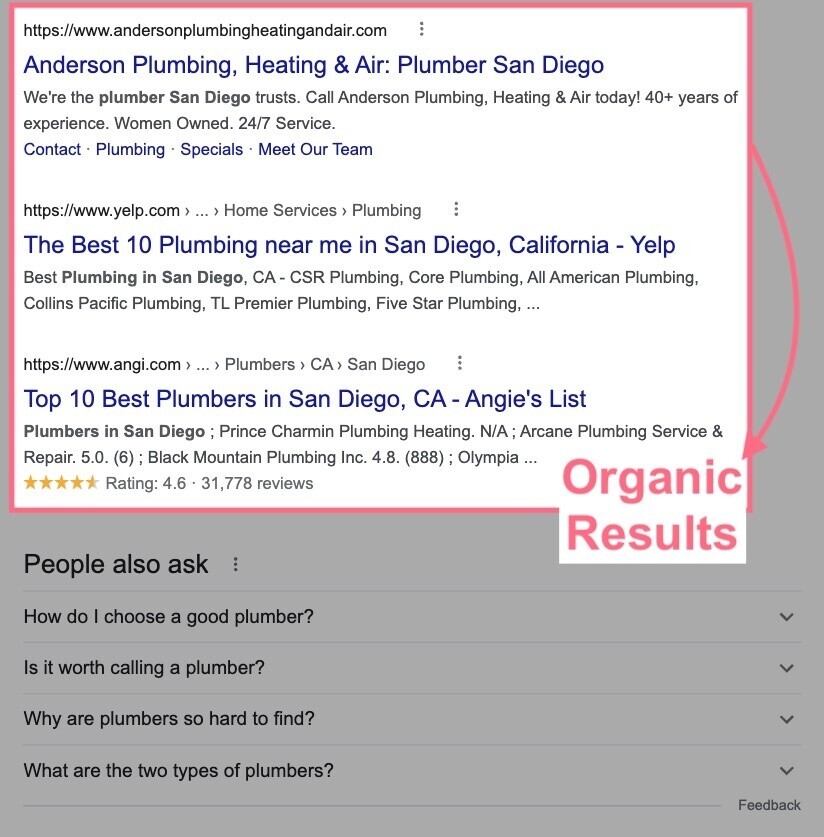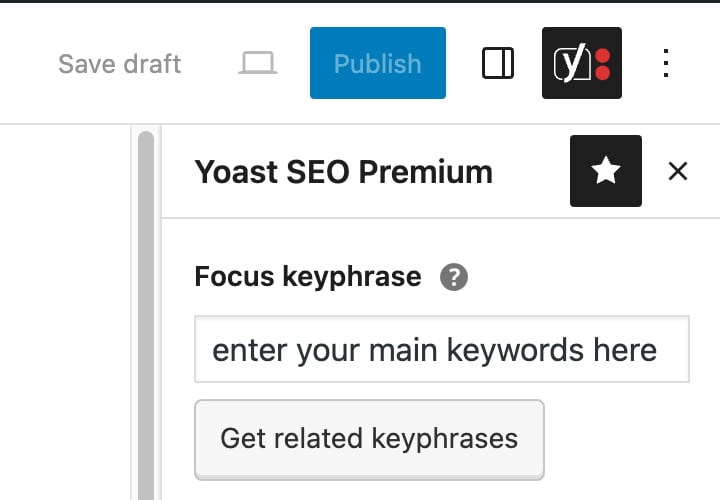What Is Local SEO Keyword Research?
Local SEO keyword research is the process of finding keywords people search for when looking for products, services, or amenities in their areas. Which tells you exactly what potential customers are searching for.
If you rely on local business, that’s valuable information.
Optimizing your pages for these keywords helps you:
- Enhance your visibility in search engine results pages (SERPs)
- Attract more organic traffic to your website
- Increase foot traffic and inquiries
- Boost sales
For example, consider the keyword “plumbers in san diego.” Anderson Plumbing ranks at the top of organic (unpaid) search results for this local term:
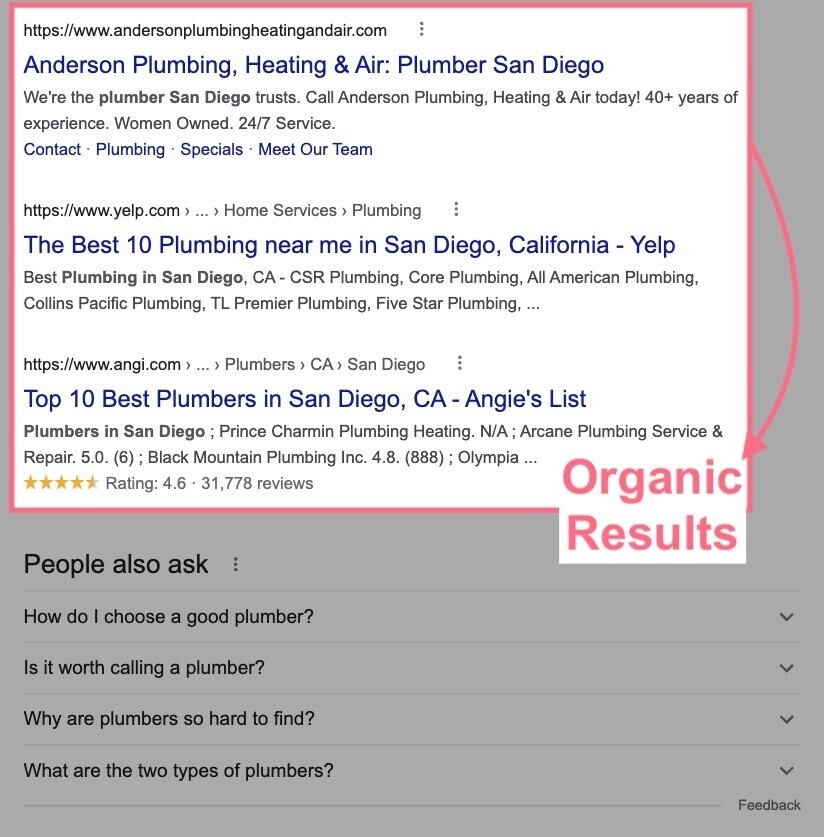
If we use Semrush’s Keyword Overview tool, we can see the page gets an estimated 7.6K visits a month from organic search alone. (It likely also attracts traffic via social media, backlinks, and other sources.)
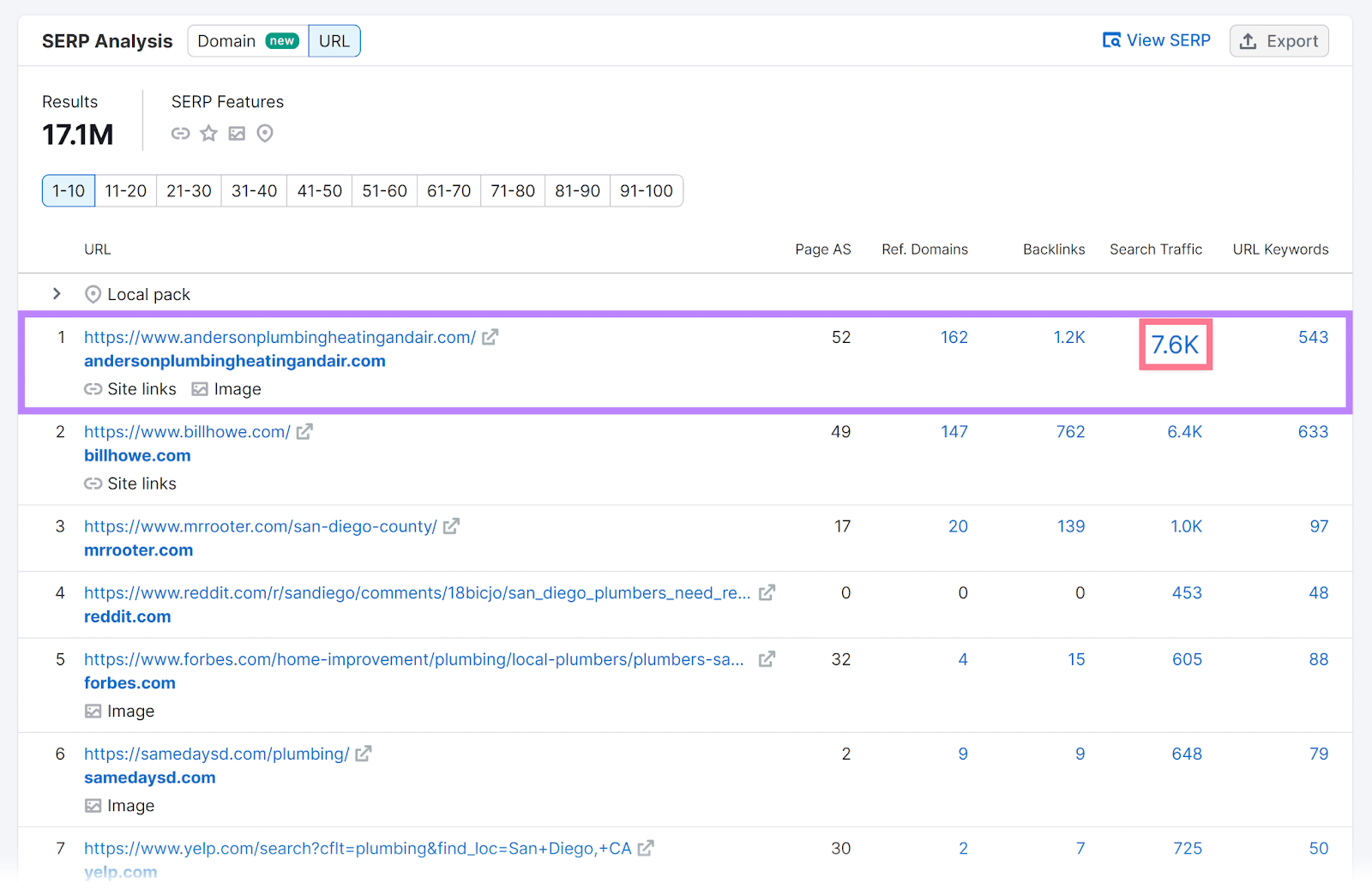
This business also appears in the local pack (the section with business listings and a map). Which gets the business even more attention.
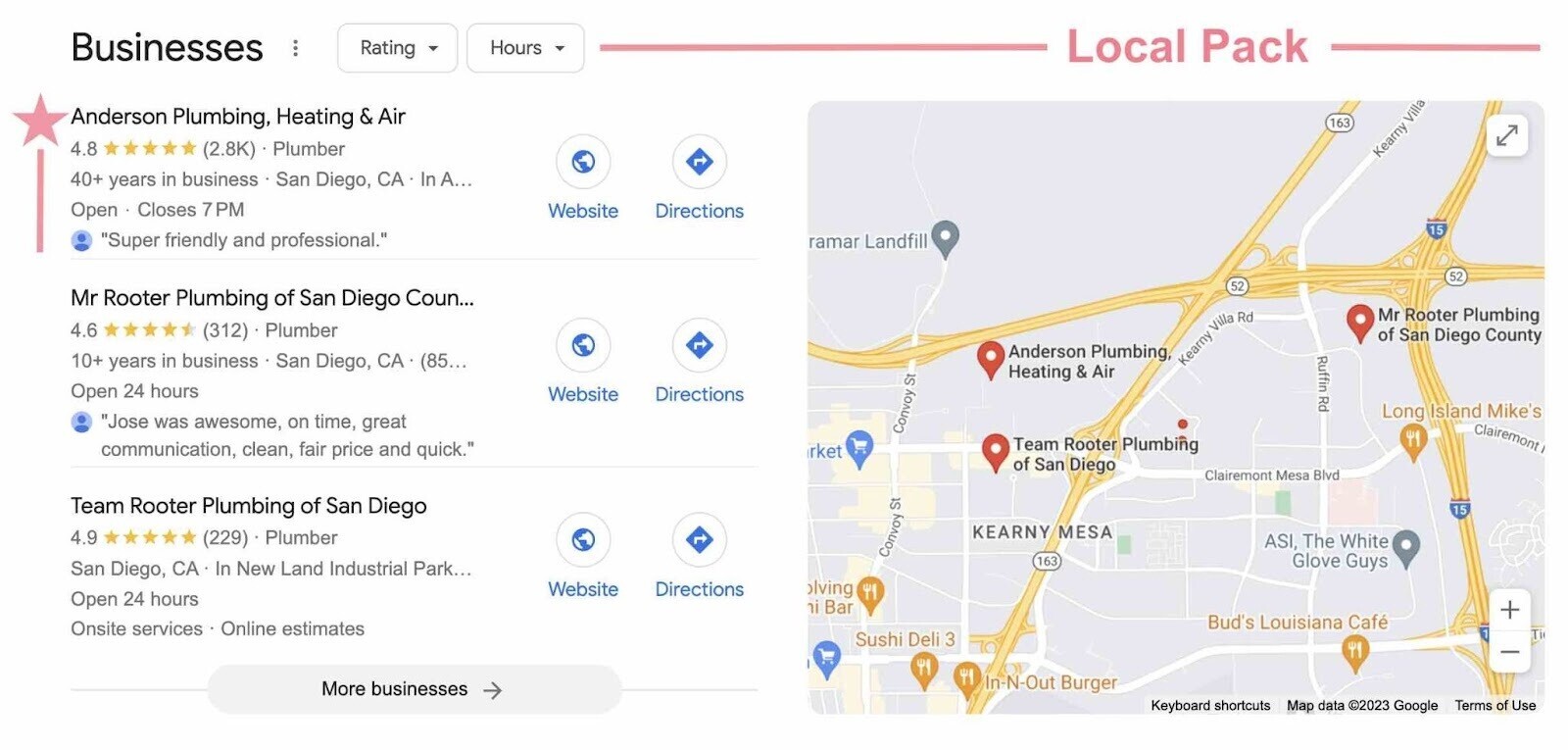
Using keyword research for local SEO can help earn your business a coveted top placement in the organic results. And the local pack.
Implicit vs. Explicit Local Keywords
When people search for local products or services, their queries have local intent. Meaning they’re looking for something in a specific area.
This local intent can be explicit or implicit.
Explicit local keywords specify a location or include a spatial term like “near me.” And make it obvious that the user is searching by location.
For example, a London resident who has lost their keys might search “locksmith near me.” Or “locksmith London.”
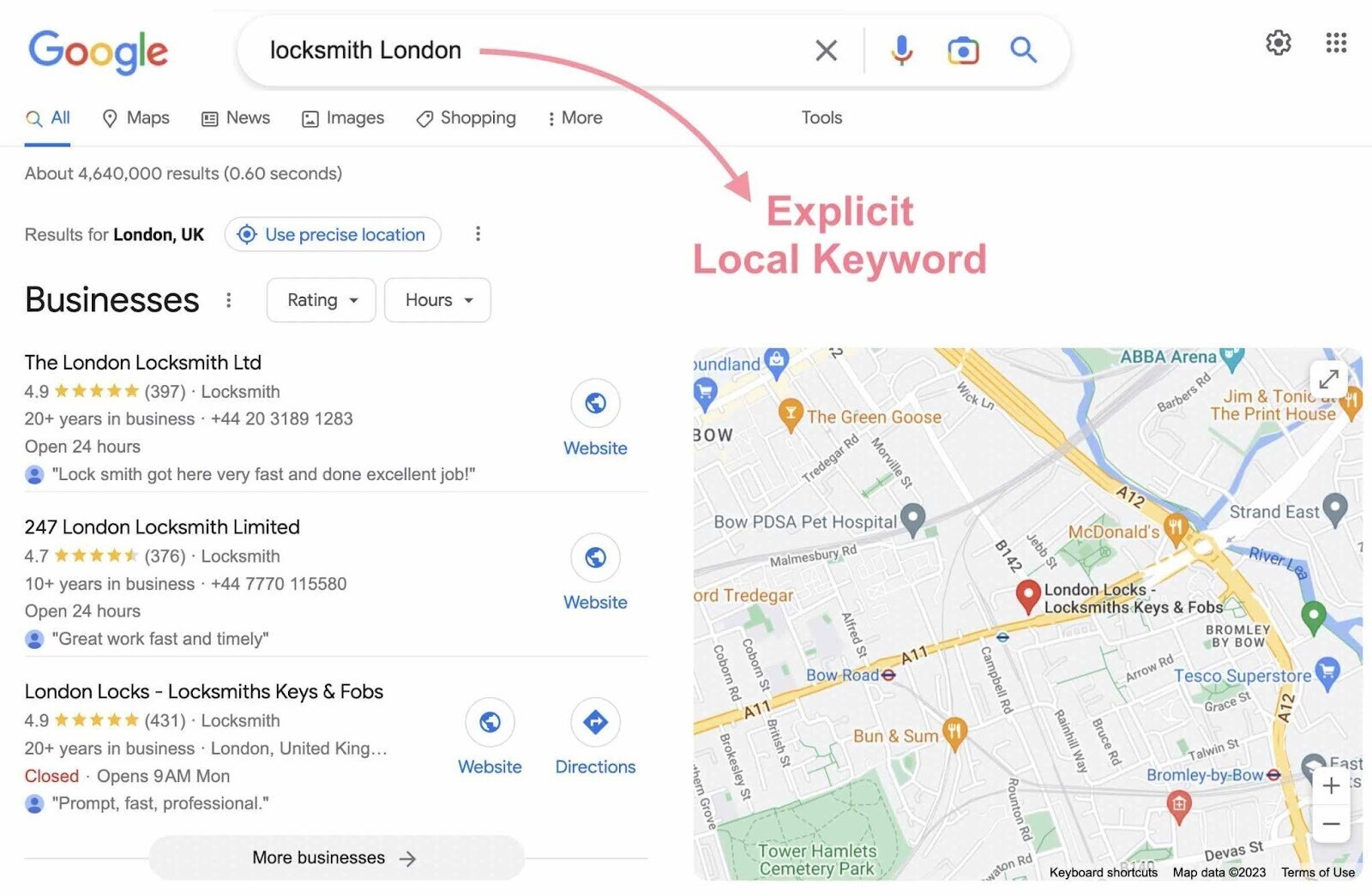
But implicit local keywords don’t specify a location or include a spatial term. Even though the user is still searching for something nearby.
For example, someone might search “locksmith.” Because they know Google will understand their desire for local results.
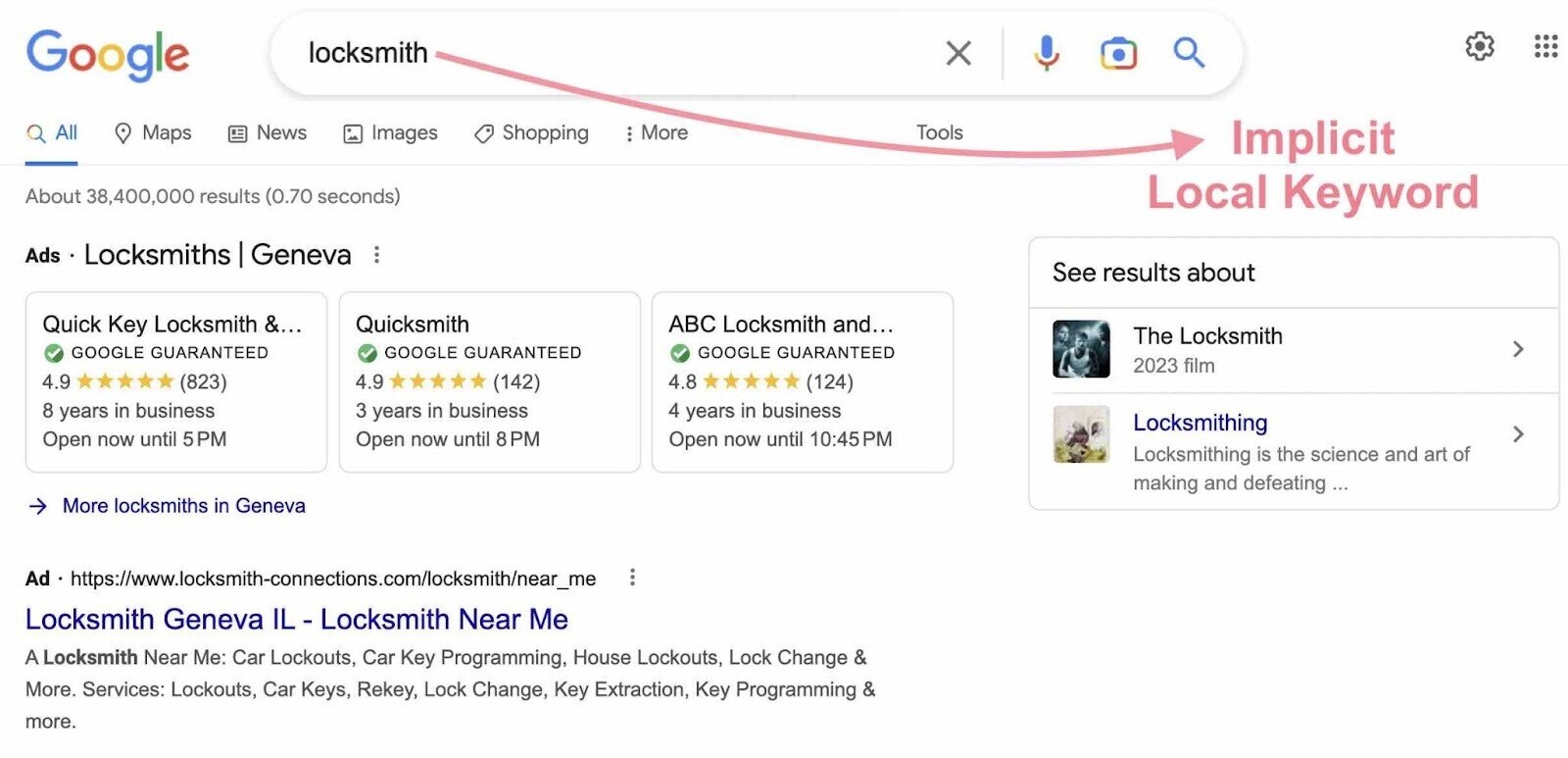
Google has sophisticated algorithms to detect local intent and various ways of determining a user’s location. So it can deliver local results whether the intent is implicit or explicit.
How to Do Local Keyword Research
Follow the five-step process below to do local keyword research for SEO.
And as a bonus, we’ll also cover how you can use local keywords to optimize your Google Business Profile.
1. List Your Solutions and Locations
Listing words and phrases that are relevant to your business will help you find local keywords later.
Start by brainstorming the solutions you offer. These will be starting points (seed keywords) for your keyword research.
Think about the general terms people might use when searching for your type of business:
- Auto repair
- Car shop
- Mechanic
The specific products and services people might search for:
- Tire repair
- Brake replacement
- Car oil
And your customers’ problems or pain points:
- Punctured tire
- Check engine light
- Steering problems
Next, list location terms. These are keyword modifiers searchers use to make their local intent explicit.
People often use spatial terms like “local,” “nearby,” and “near me” to search locally. So, add these to your list.
Then add place names specific to your target location. The cities, towns, and other areas that customers might base their search around.
For example, if your business serves the Twin Cities area of Minnesota, you might add the following locations to your list:
- Minneapolis
- St. Paul
- Maplewood
- Brooklyn Park
You’ll use your solution seed keywords and location modifiers in the next step.
2. Find Relevant Local Keywords
You’re now ready to use local keyword research tools. Which tell you exactly what people search for. And give you associated data, like the average number of searches per month.
Semrush’s Keyword Magic Tool draws on the biggest keyword database on the market. And you can use it to find lots of relevant local keywords.
Open the tool and enter one of your solution seed keywords from step one. And add your website’s URL for domain-specific insights (we’ll go over how to use those in the next section).
Choose your target country and select “Search.”
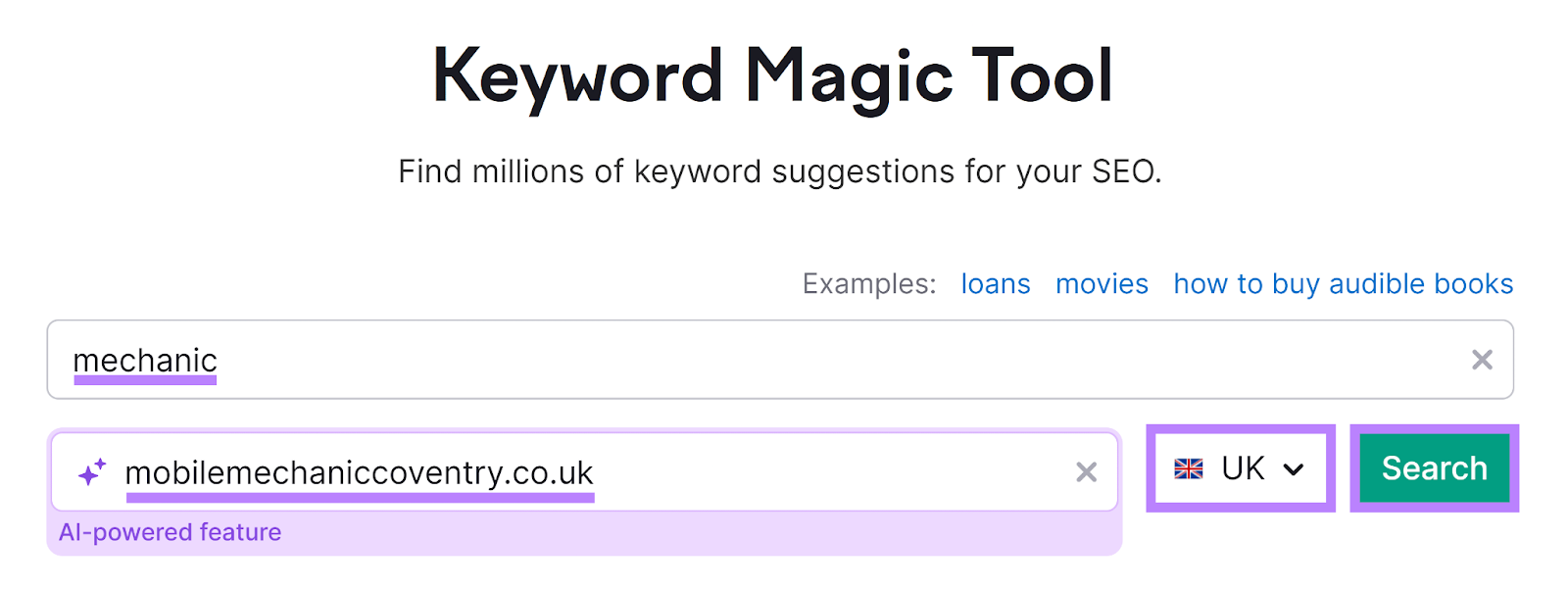
You’ll see a list of keywords that contain the seed keyword or a variation.
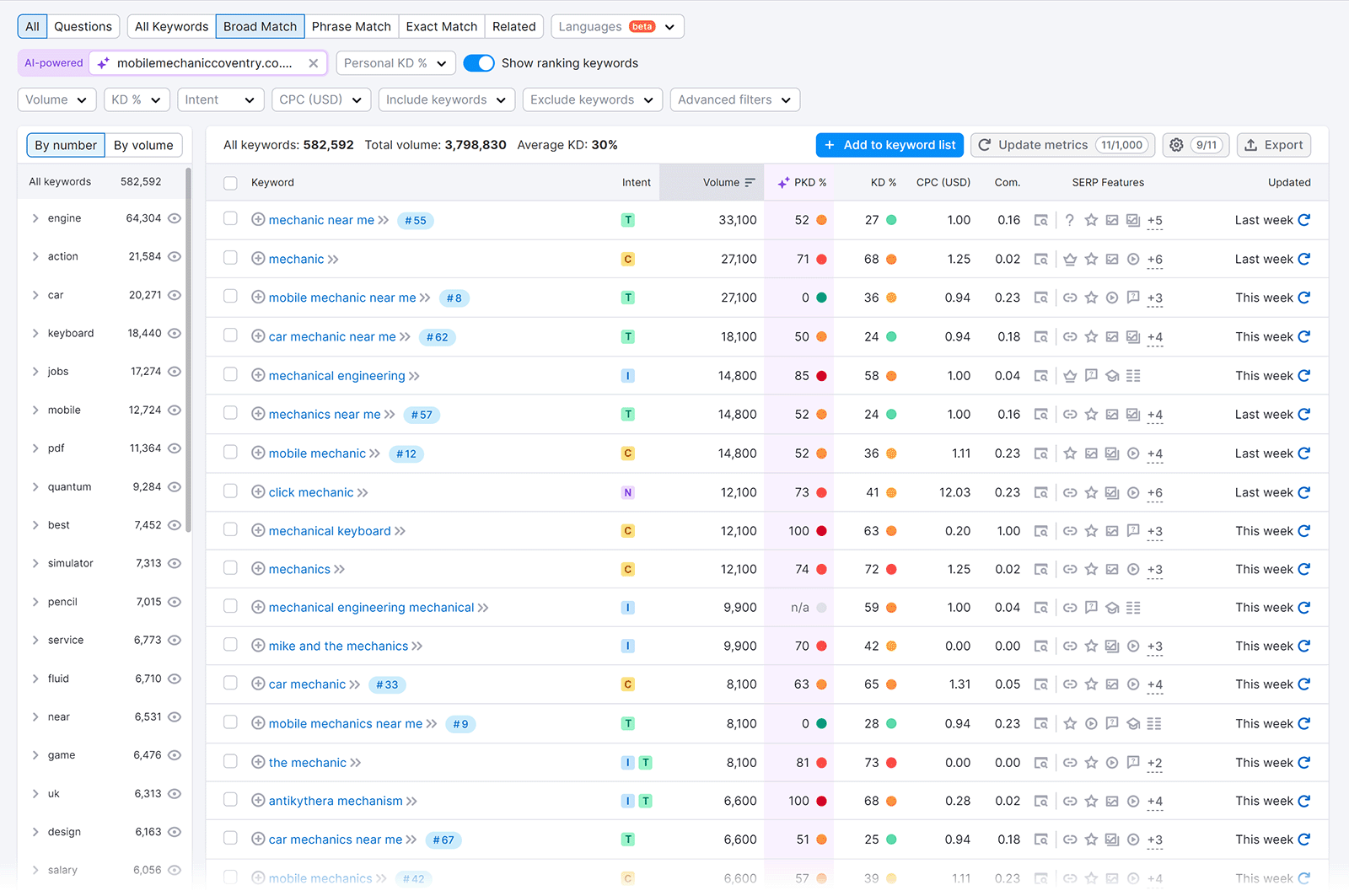
To narrow down to keywords with local intent, apply filters.
The quickest way to find explicit local keywords is to add your keyword location modifiers to the “Include keywords” filter.
Make sure to use the “Any keywords” option. Then, click “Apply.”
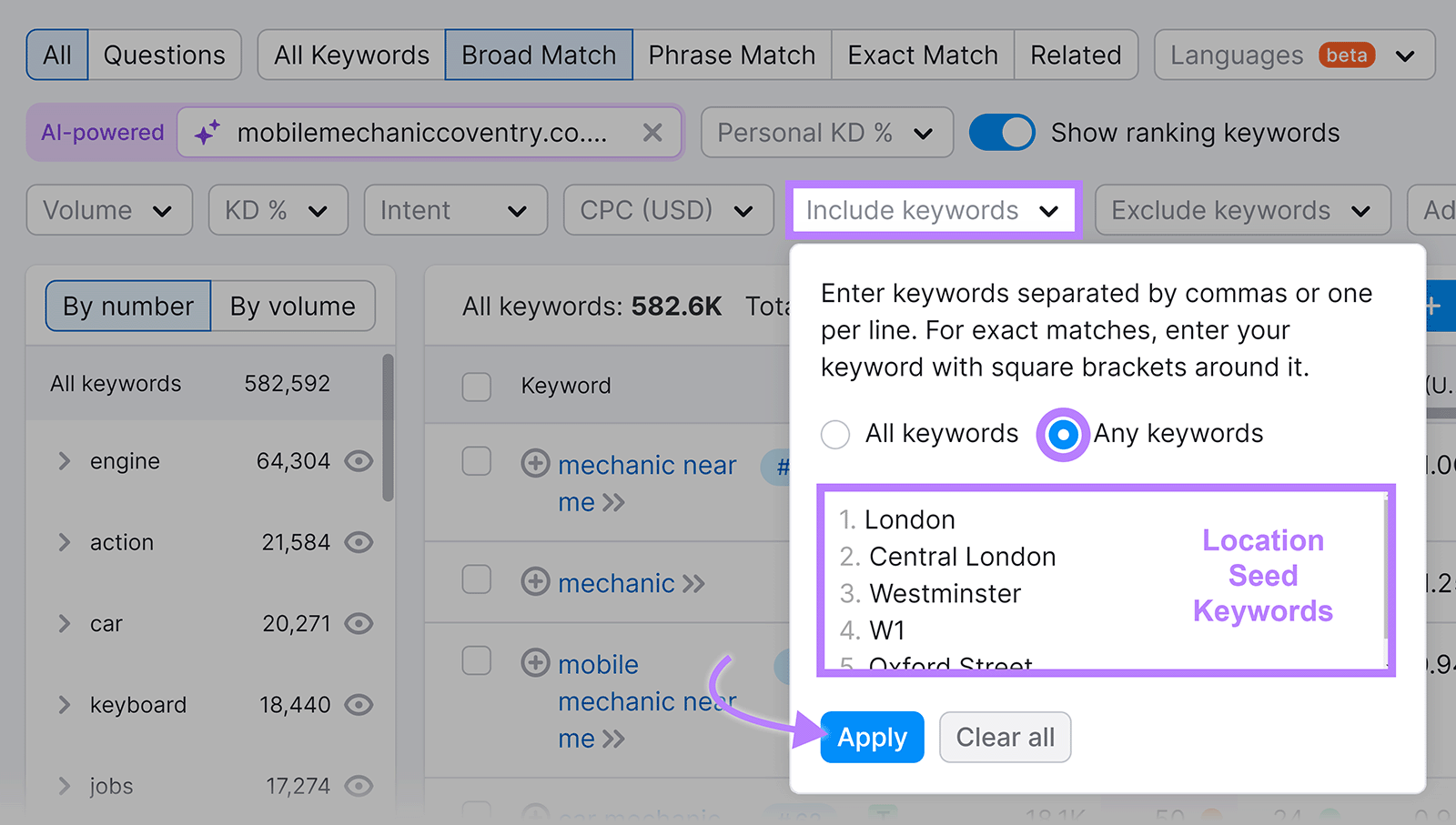
Review the filtered keyword list.
Look for terms that make sense for your business. And your local audience’s specific needs.
If you entered your domain name when you added your seed keyword, check the Personal Keyword Difficulty (“PKD %”) column.
This metric tells you how hard it will likely be for your specific website to rank for each keyword—based on your site’s authority and content relevance compared to top-ranking competitors.
Narrow down your list by clicking the “Personal KD %” drop-down and setting a range of 0-49 (which represent terms you have a solid chance of ranking for). Then, click “Apply.”
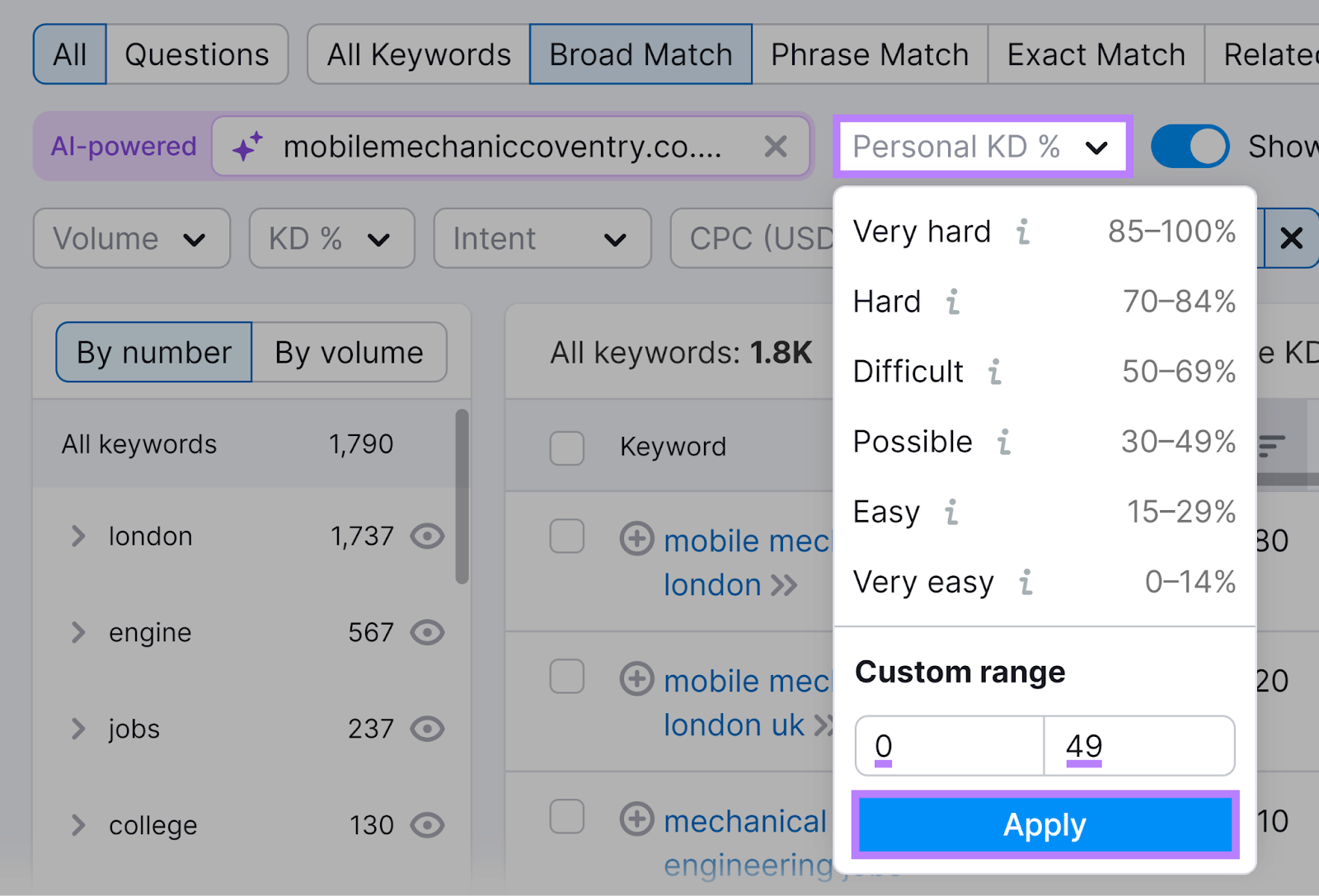
Aim for a balance of high search volume and realistic Personal Keyword Difficulty to find keywords you can feasibly rank for that will also attract enough searches to make your efforts worthwhile.
Next, save all the relevant keywords you found by selecting the checkboxes next to them and clicking the “+ Add to keyword list” button.
The keywords you save can be used in Keyword Strategy Builder later on.
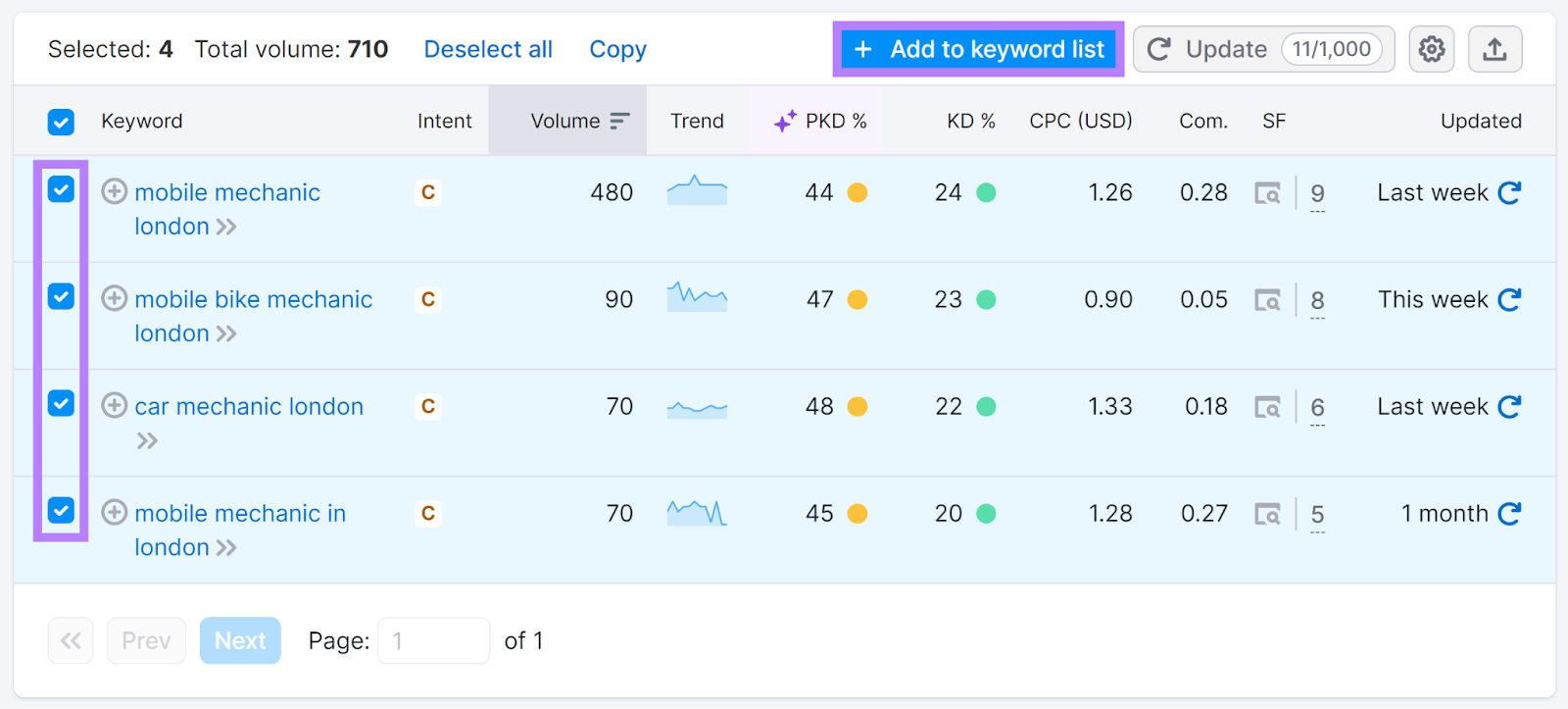
Alternatively, use the “Export” button to download your keyword data.
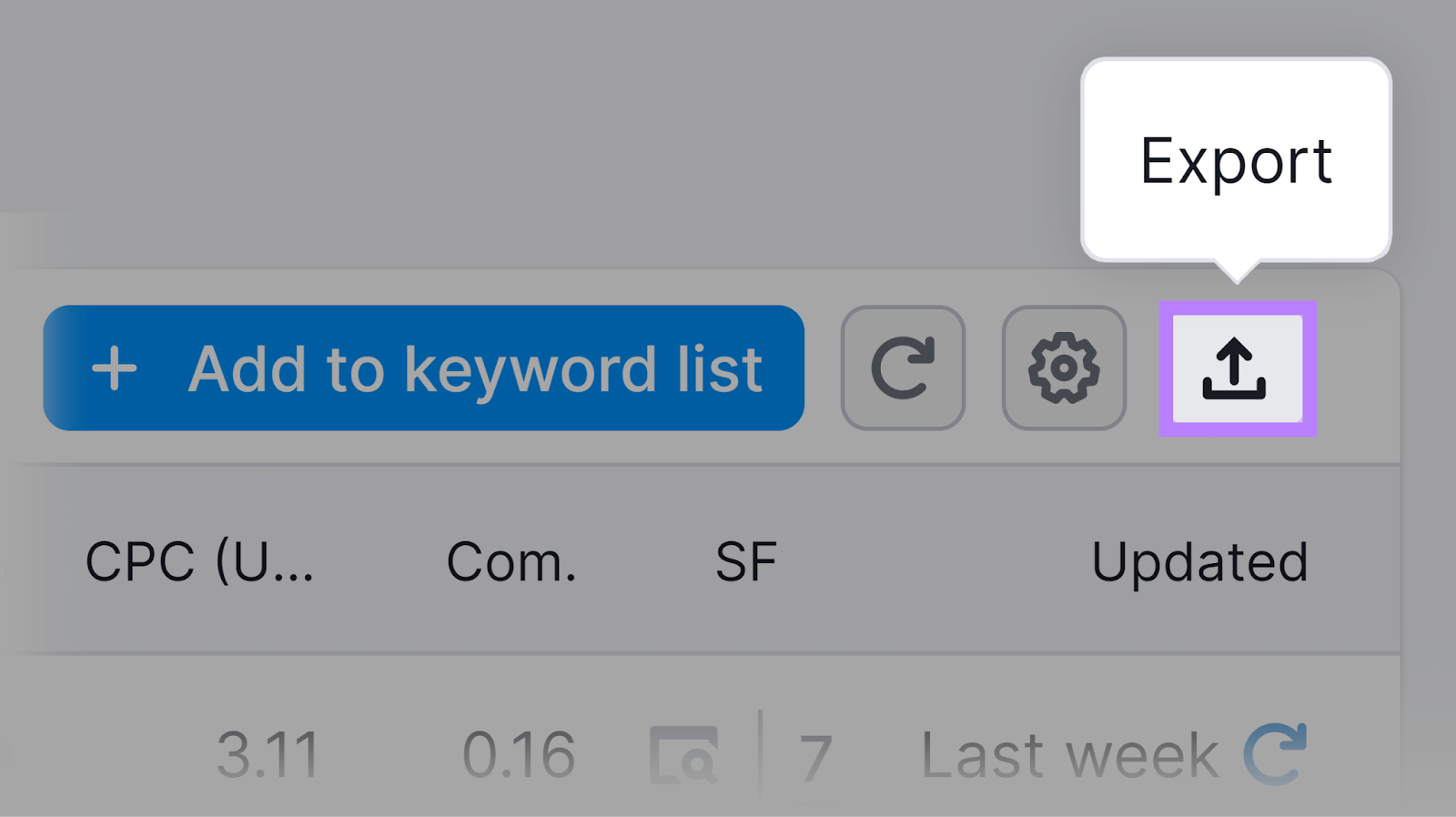
Next, look for implicit keywords.
Move your location modifiers to the “Exclude keywords” filter. This hides the explicit keywords you’ve already found.
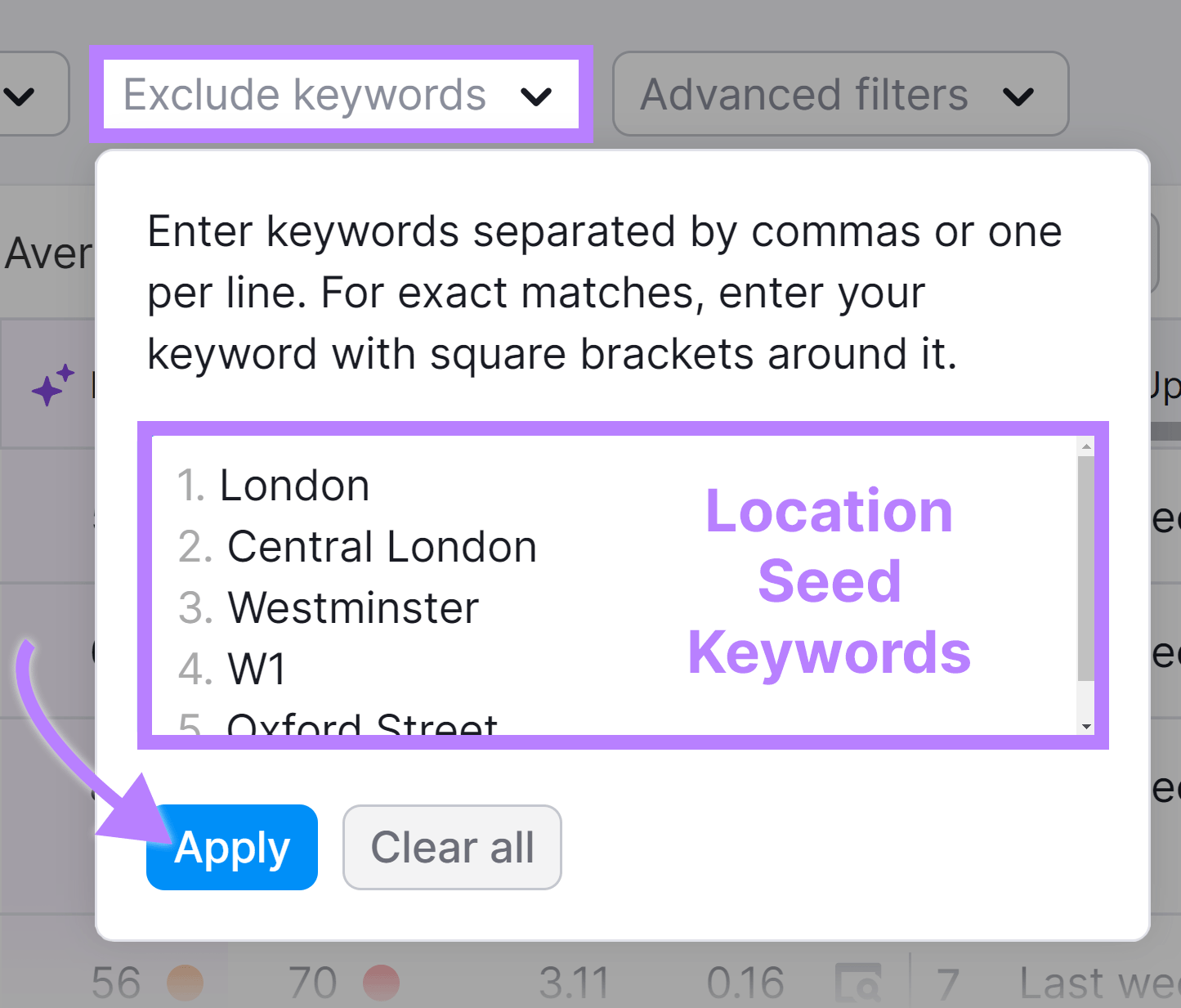
Then, filter for search queries that trigger the local pack. Which will show keywords that have local intent.
To do this, click “Advanced filters,” select the “Any” drop-down under SERP features, check the box next to “Local pack,” and click “Apply.”
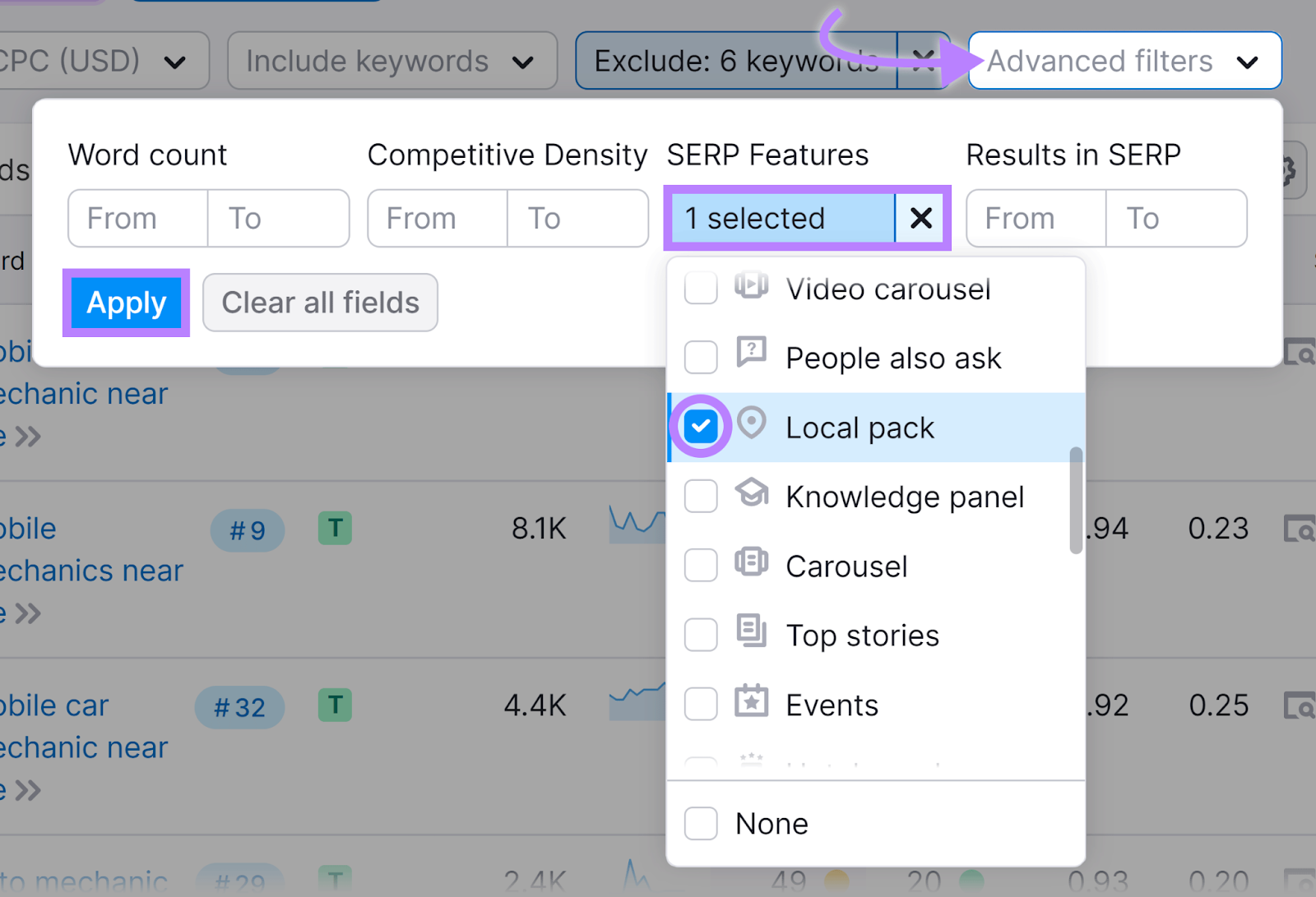
Again, carefully review the filtered list of implicit local keywords by considering search volume and Personal Keyword Difficulty. And add relevant keywords to the list you started earlier.
3. Evaluate Local Metrics
Now that you have a list of local keywords, prioritize them by checking each individual keyword’s metrics in your target locations.
The key will be to target low-hanging local SEO keywords first. These are the keywords you’ll have the best chance to rank for in your specific location.
Do this with the Keyword Overview tool.
Open the tool, enter the keyword you want to learn more about, and select your location. Then, click “Search.”
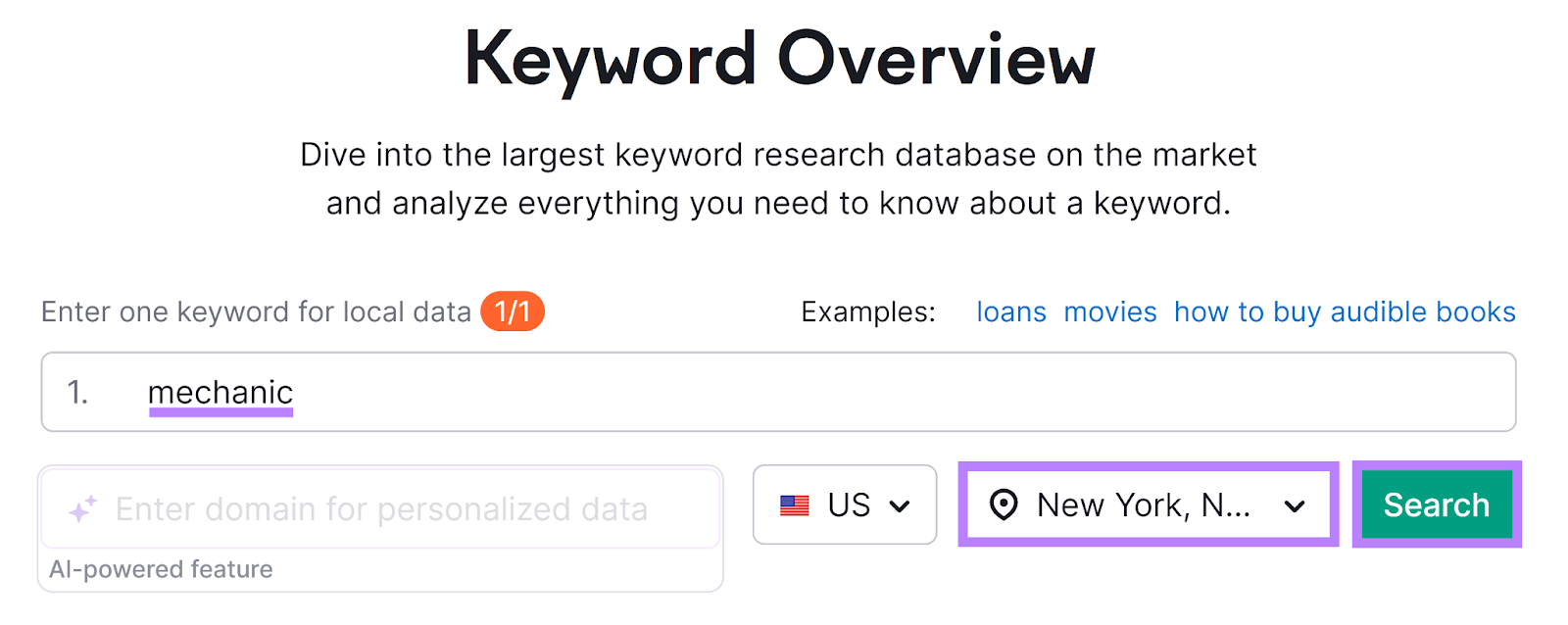
You’ll see an overview report with local data (like volume and keyword difficulty) at the top.
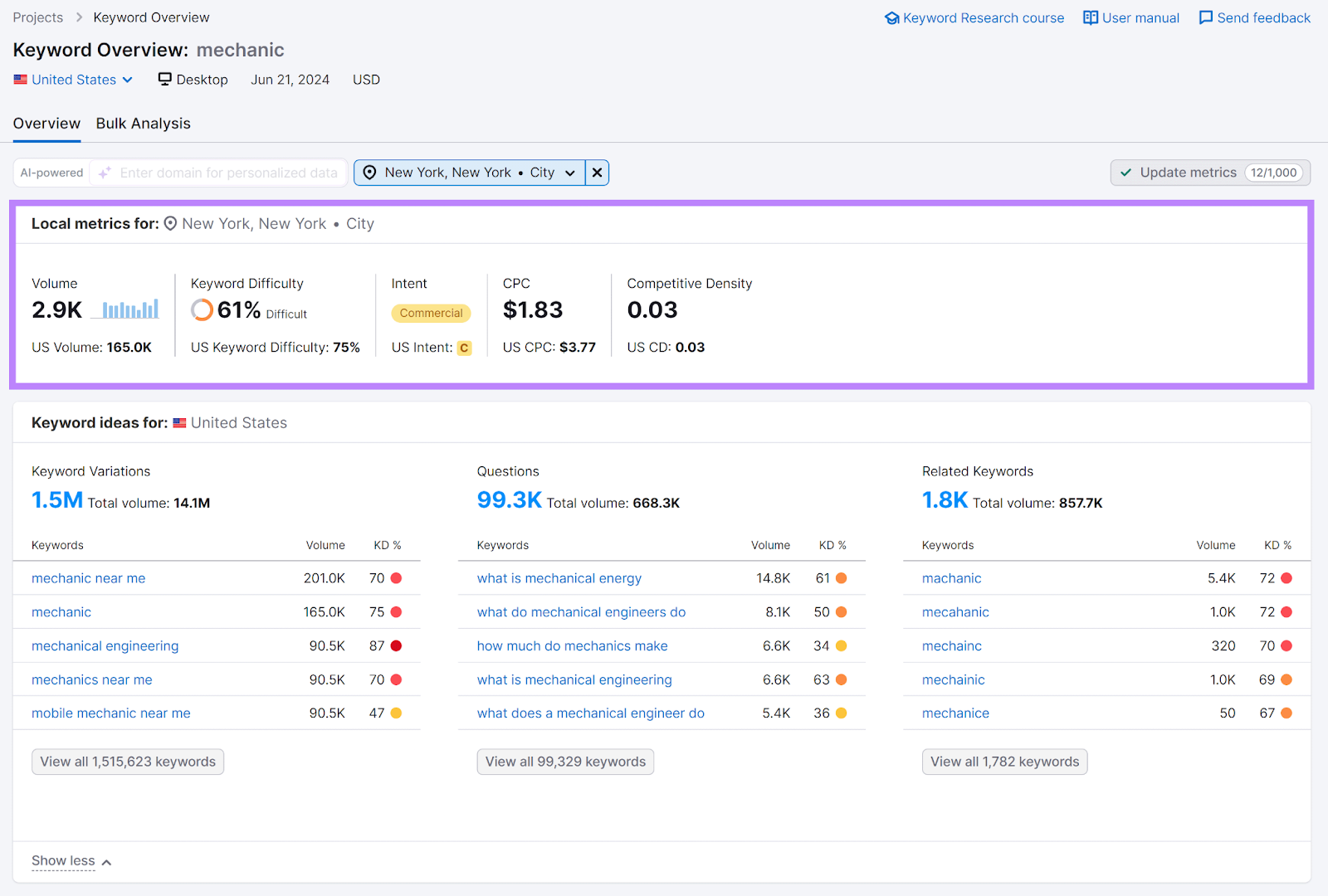
Check the local metrics for all your saved keywords.
If any of the data points suggest the term might not be a great fit (perhaps there’s no search volume in your location or the location-specific keyword difficulty is incredibly high), consider removing them from your list.
This way, you can allocate your SEO resources where they have the highest potential to increase your local visibility and attract relevant traffic.
4. Find Competitors’ Keywords
Fill any gaps in your local SEO keyword research by looking at your competitors’ keywords.
To start, find your biggest online competitors by searching a local keyword in Google.
Let’s say you own an auto shop in Philadelphia. Based on results for “auto shop philadelphia,” Don’s Auto Repair and Philly Auto Repair could be two of your main rivals.
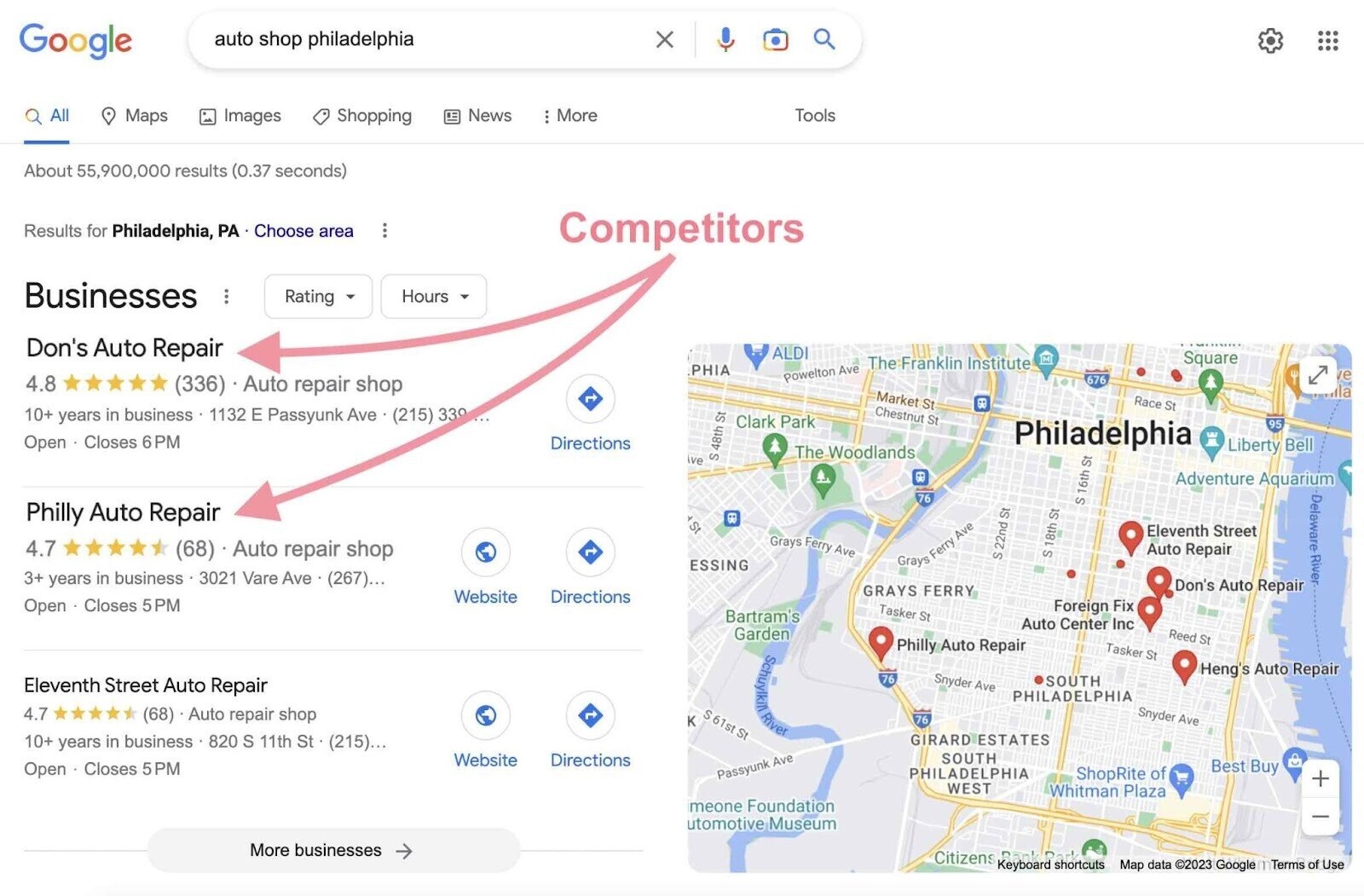
You can also use Semrush’s Domain Overview tool to find competitors that rank for similar keywords.
Open the tool and enter your domain. Then, select your country and click “Search.”
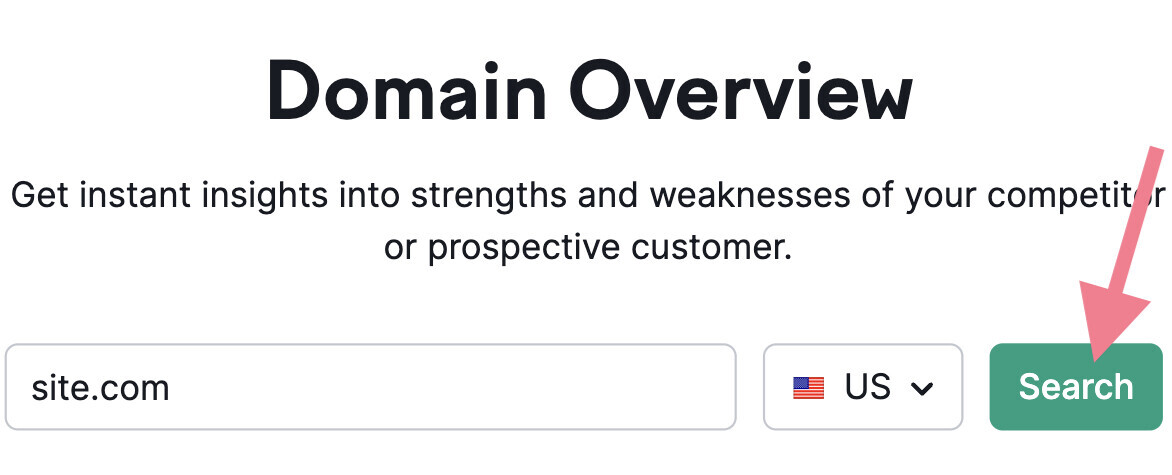
If you have different pages for different locations, go back to the search bar at the top. Replace the domain with your location-specific URL (e.g., “site.com/locations/city”).
Then change “Subfolder” to “Exact URL” and click “Search” again. That way, you can find competitors for this specific location.
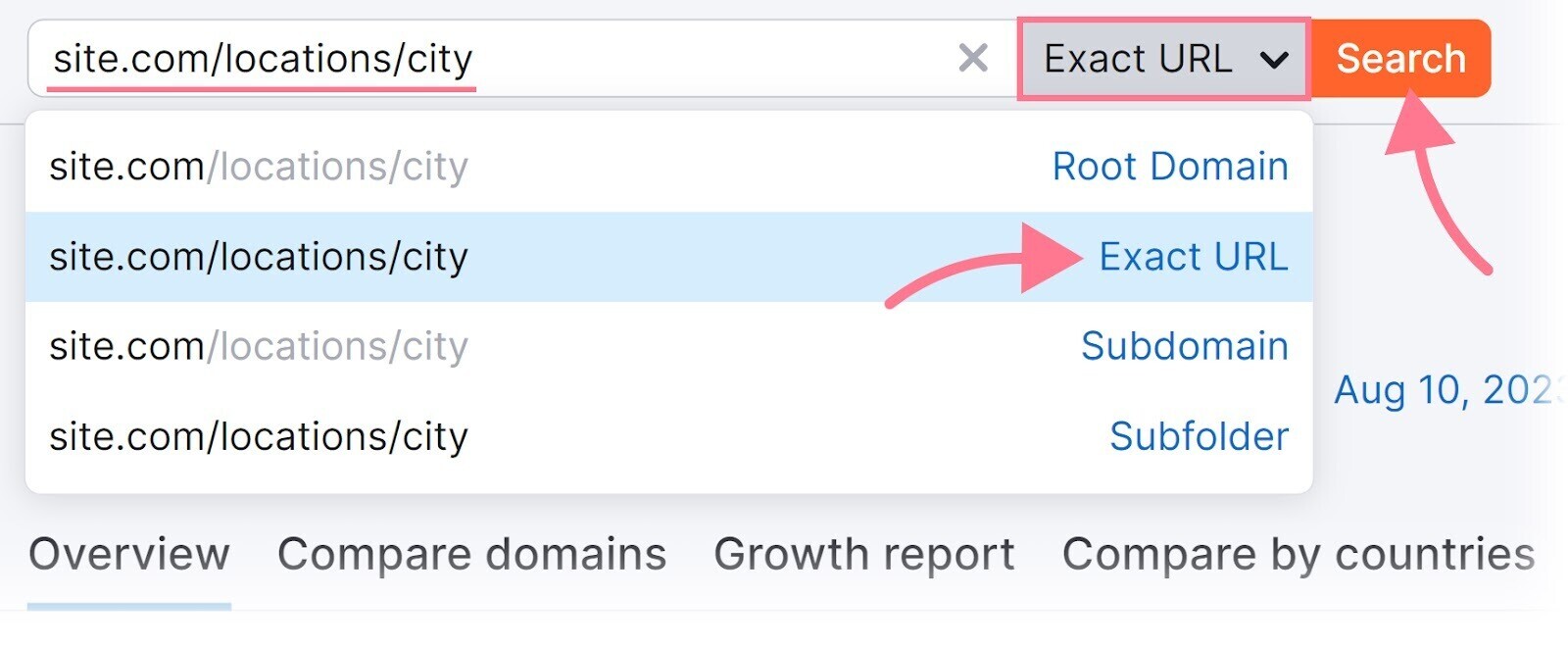
Scroll down to the “Main Organic Competitors” section. Jot down your top competitors’ domains straight away. Or click “View details” to see more.
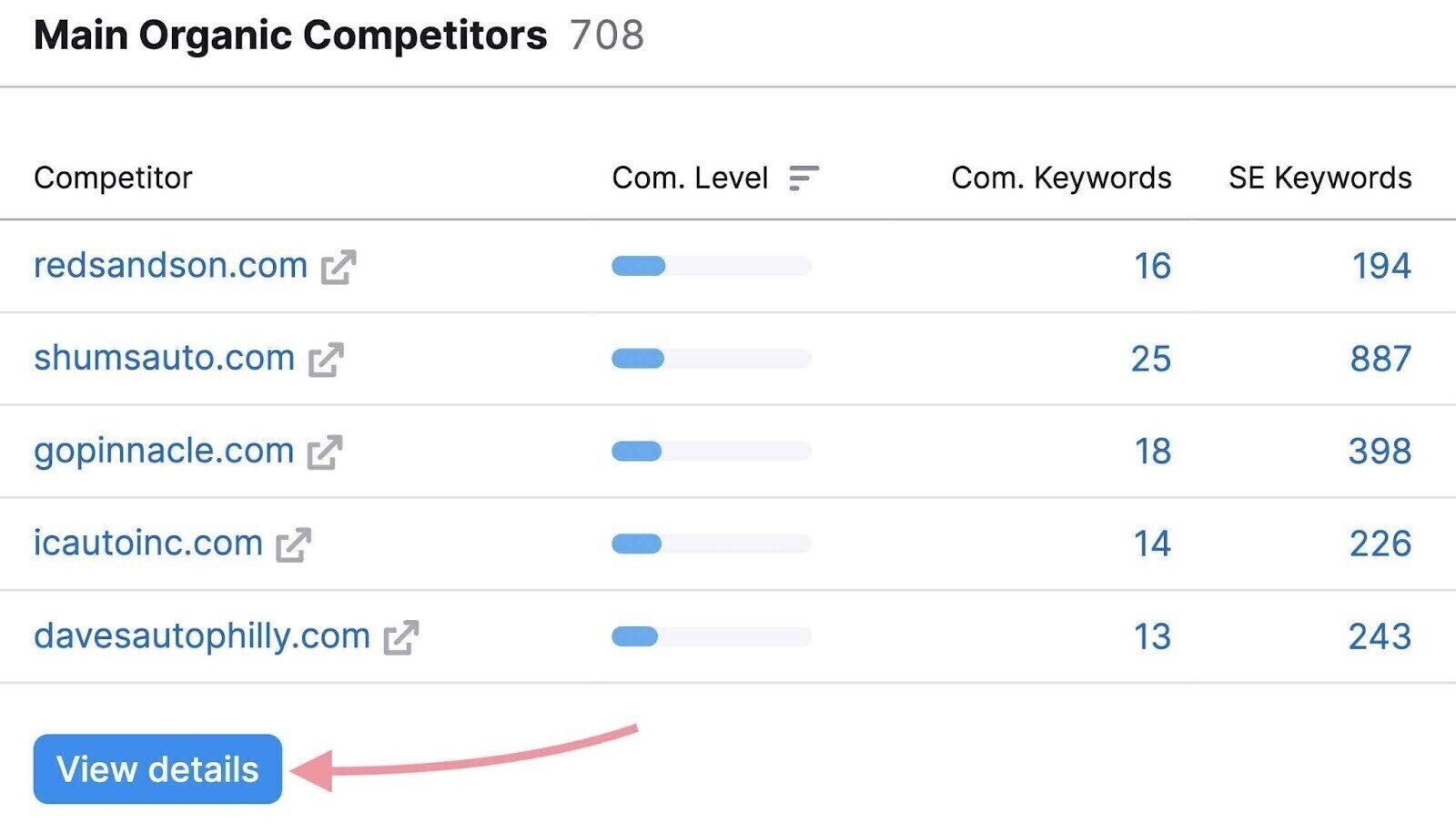
Once you’ve identified your biggest online competitors, find keywords they’re ranking for but you’re not with Semrush’s Keyword Gap tool.
Open the tool, enter your URL and up to four competitors’ URLs. (Again, use location-specific URLs where required, making sure to search by “Exact URL.”)
Then, select your target location and click “Compare.”
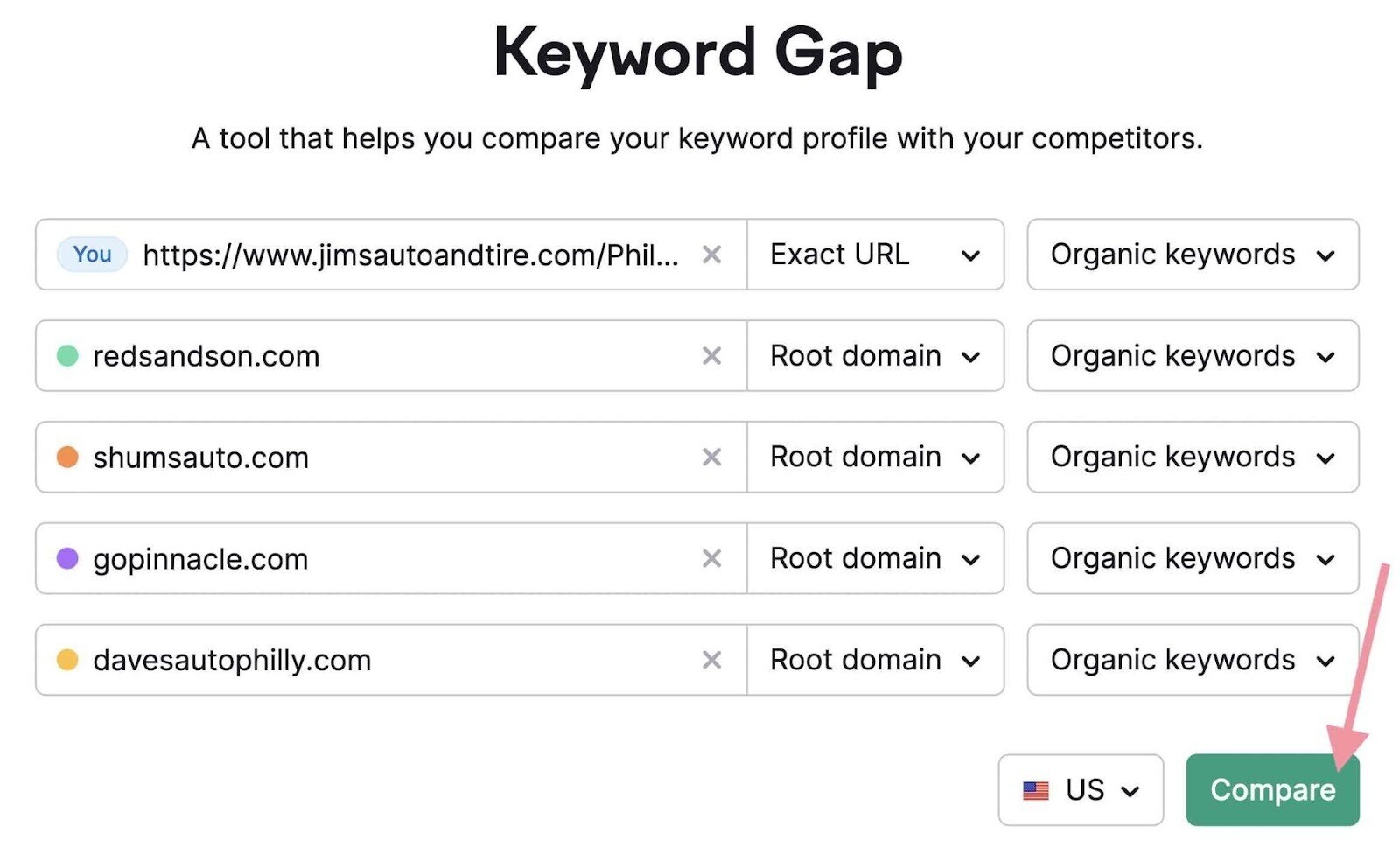
Switch from “Desktop” to “Mobile” results. Because many local searches are performed on mobile devices.
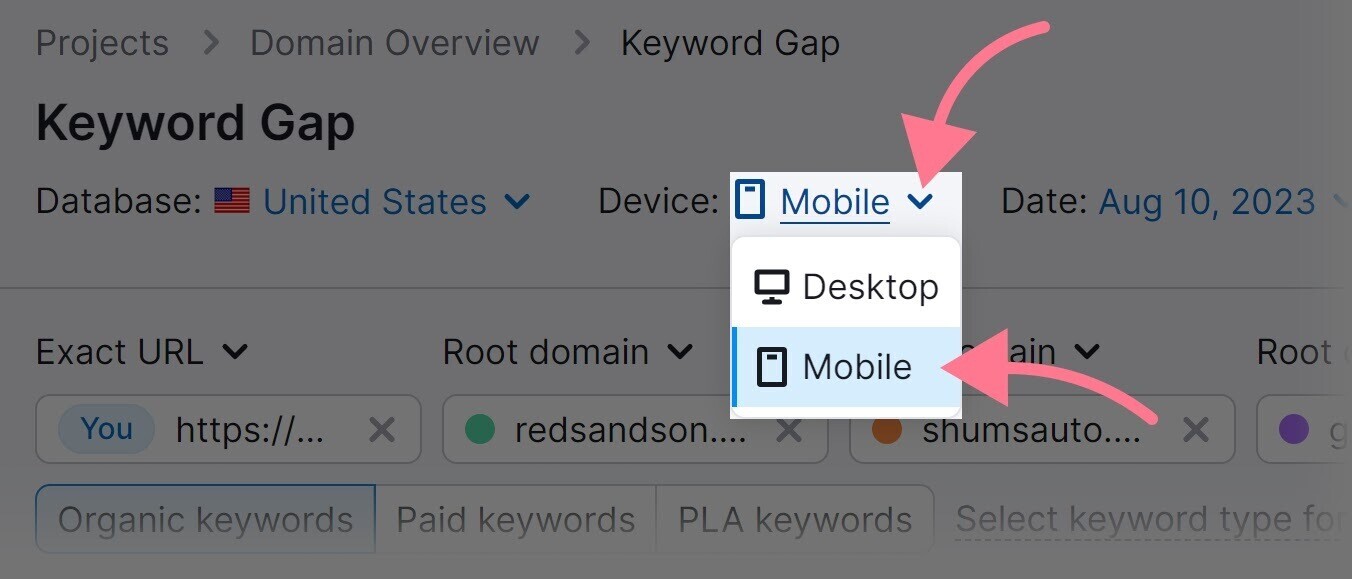
To find terms your rivals rank highly for, go to “Position” > “Competitors” > “Top 10.” And click “Apply.”
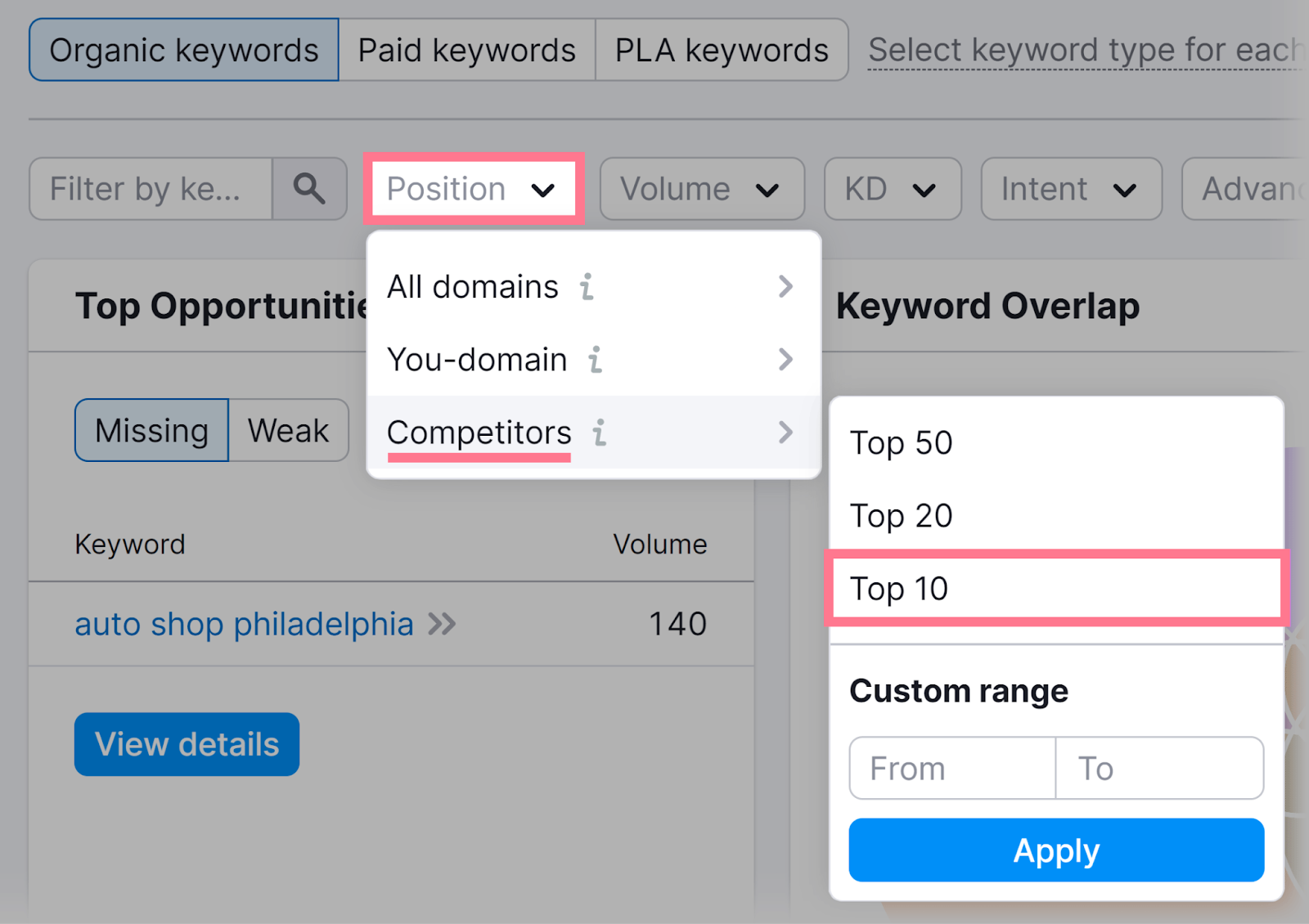
Then, exclude keywords that contain your competitors’ brand names. (You likely don’t want to target these, although there may be some rare exceptions.)
Go to “Advanced filters” and set the fields to “Exclude,”“Keyword,” and “Containing.” Then, enter “[Competitor Name]” in the last field.

Finally, filter for explicit local intent using the location keywords you gathered earlier.
Go to “Advanced filters” and set the fields to “Include,” “Keyword,” and “Containing.” And enter “[Location Keyword].”

Scroll down to the “Untapped” tab. These are keywords at least one competitor ranks highly for but you don’t rank for at all.
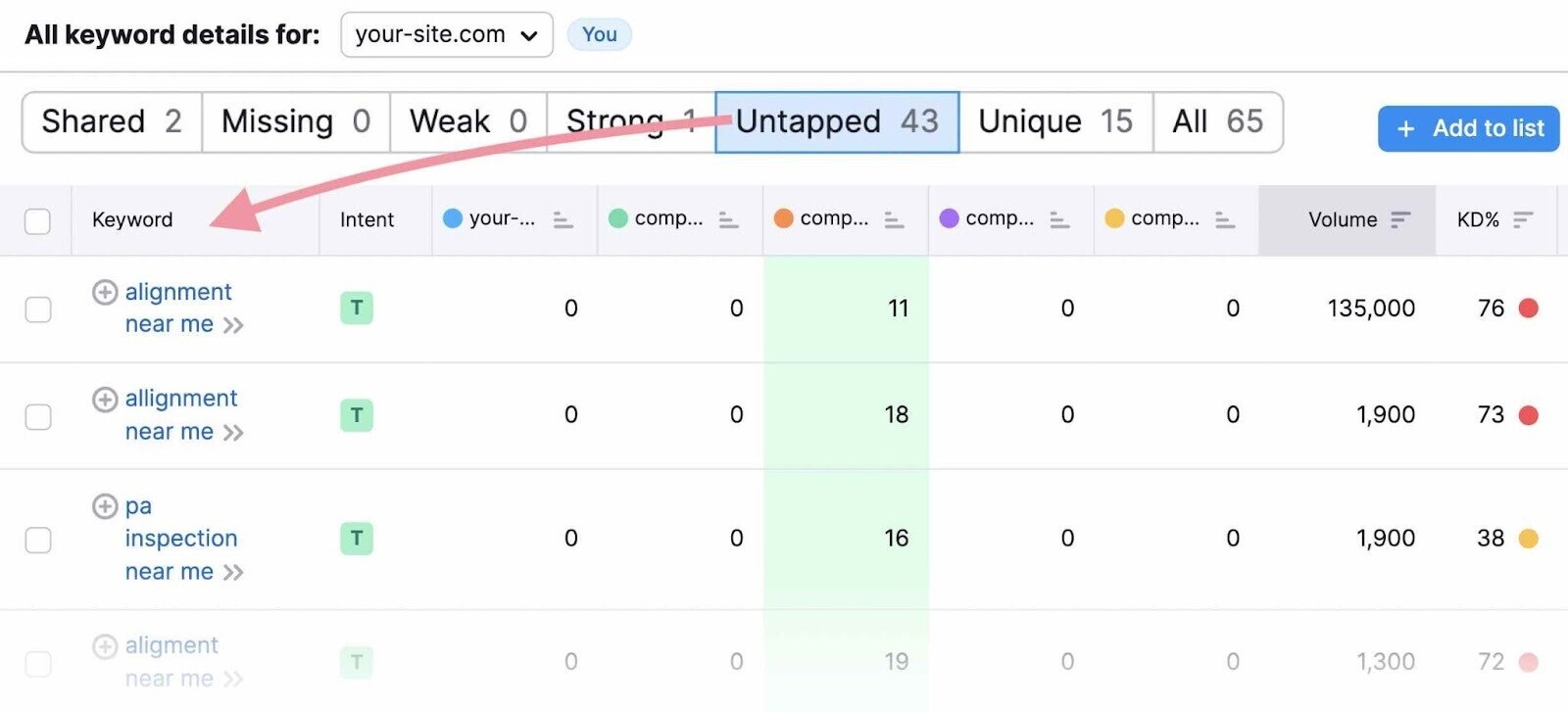
Review the keywords and select the most relevant ones. And add them to your list.
5. Map Your Keywords to URLs
You should now have a comprehensive list of local SEO keywords to target.
The next step is keyword mapping. Which is matching each target keyword to the existing or future page you’ll target it on.
That way, you can ensure there’s an optimized page for each search term you want to appear for.
Keyword Strategy Builder can automatically group your keywords into pages based on relevancy and search intent. Making it easy to start planning your content.
When you go to the tool, scroll down and open the keyword list you created earlier.
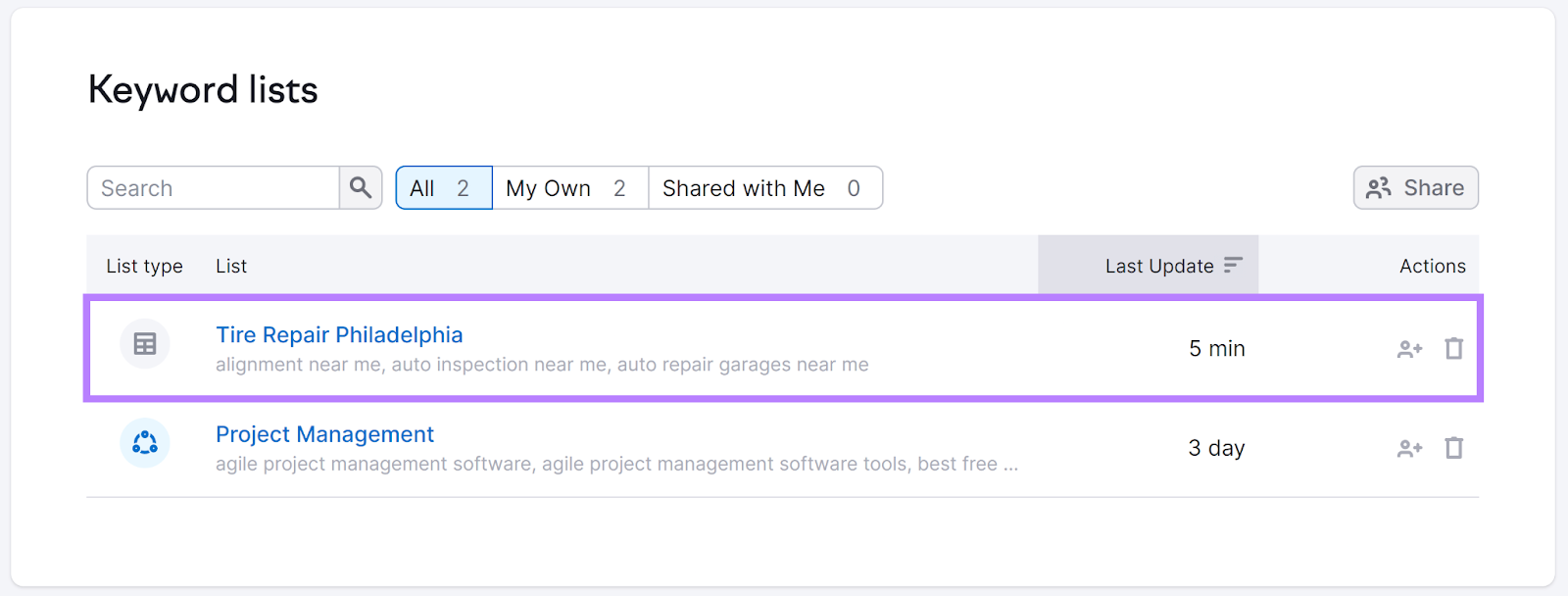
If you’ve saved your keywords in a spreadsheet, click on “Create a regular list.”
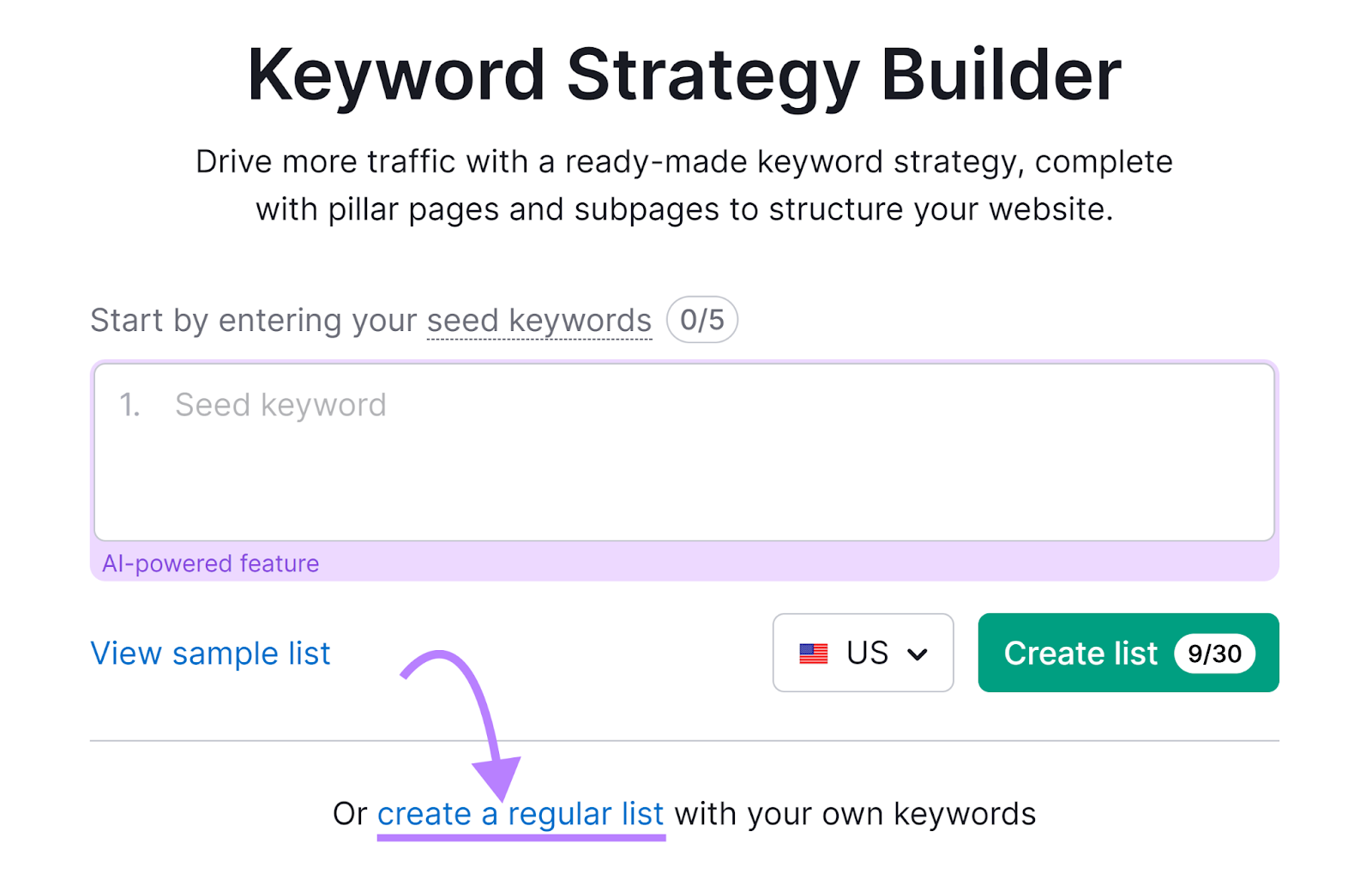
Then, click the “Add keywords” button. And add all your terms in the space provided.

Once you’ve opened or created your list, go to the “Topics and pages” tab and click “Cluster this list.”

You’ll see your keywords grouped into pages. And each page is focused on a primary (main) keyword.
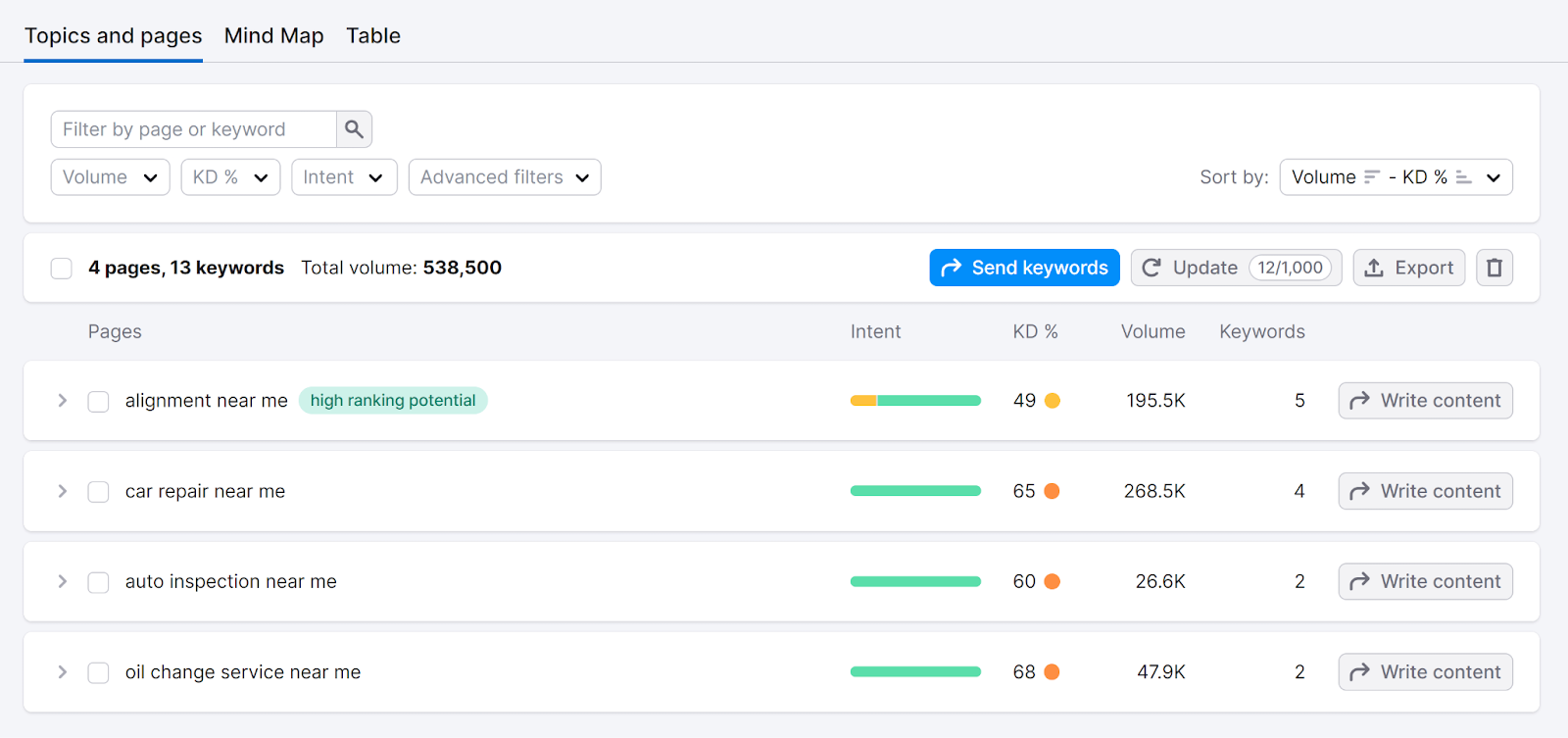
Click on the arrow next to any page topic to see:
- A list of secondary keywords to target with that page
- A list of top-ranking results for inspiration
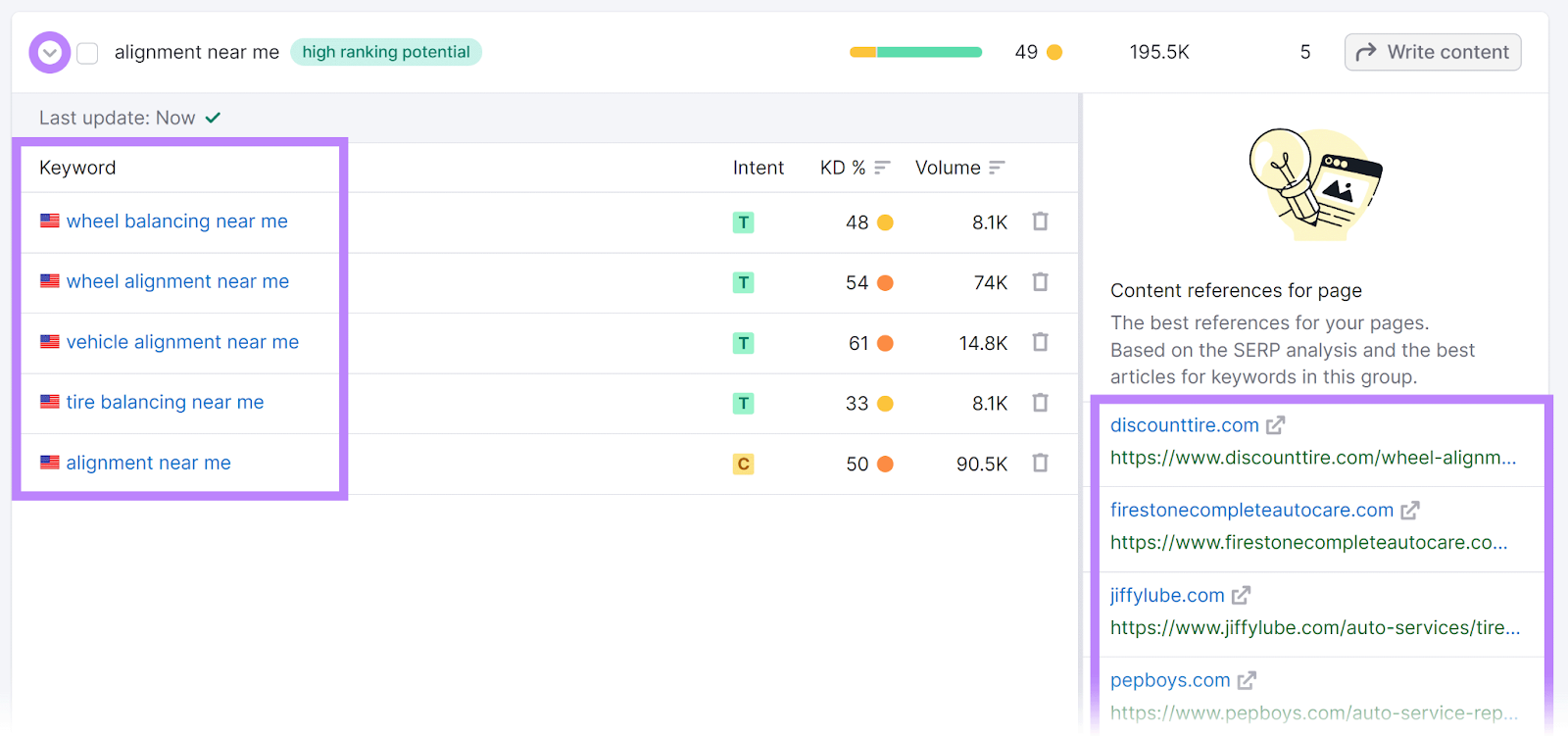
Study the top-ranking results to get a better understanding of what type of content you’ll need to create to rank. And then determine which pages you’ll need to create and which ones you already have but need to optimize.
If the page doesn’t yet exist, you’ll need to assign it a target URL. And create a page that meets search intent—that gives the searcher (and Google) what they’re looking for.
For any pages that you have and plan to optimize, assign it the existing URL.
This is easy to do using a simple spreadsheet.
Download our free keyword mapping template. And list all your pages, keywords, and target URLs.

Bonus Tip: Optimize Your Google Business Profile
Don’t stop at optimizing your website for local keywords. Optimize your Google Business Profile (GBP), too.
Google can use your GBP information in the local pack.
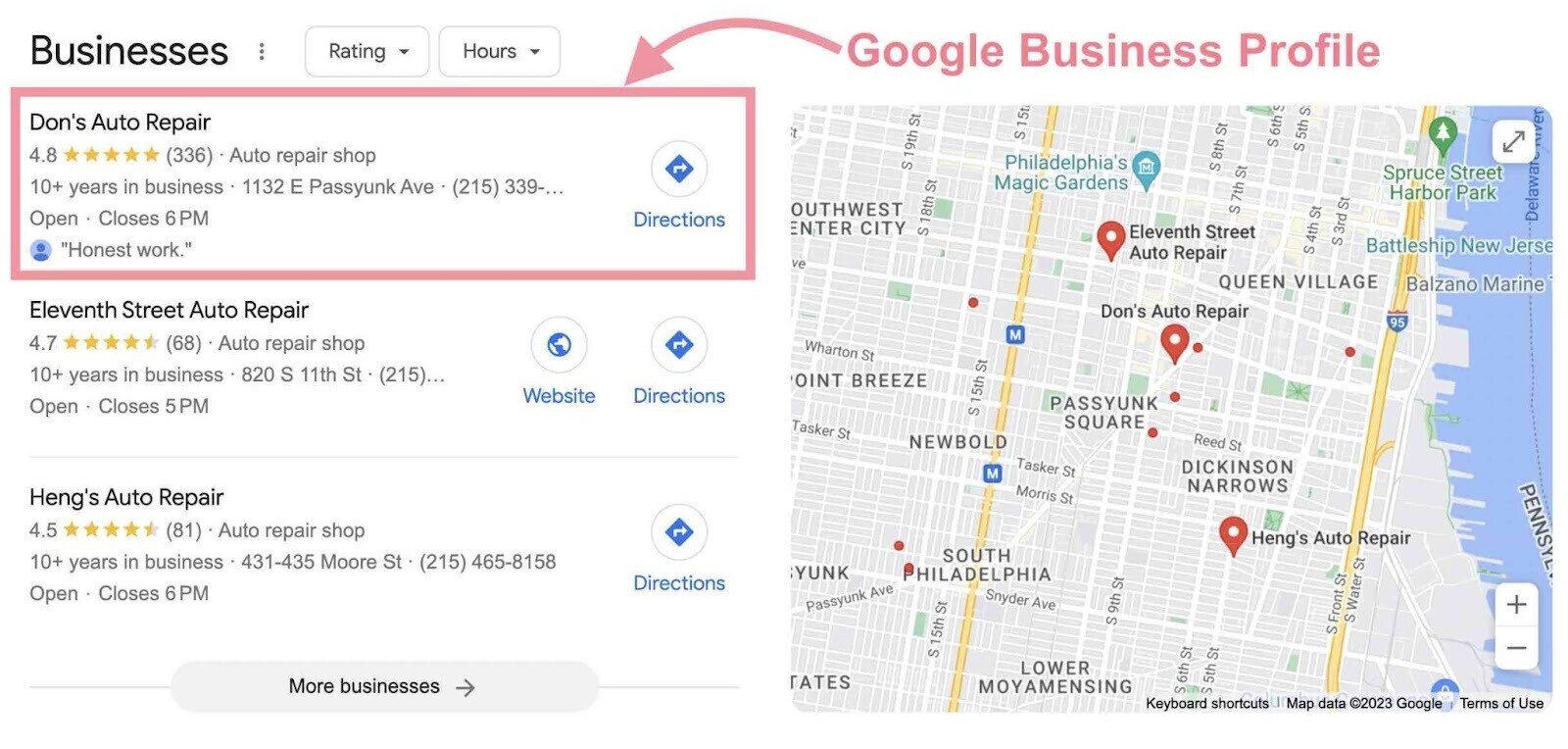
And other Google Maps results.
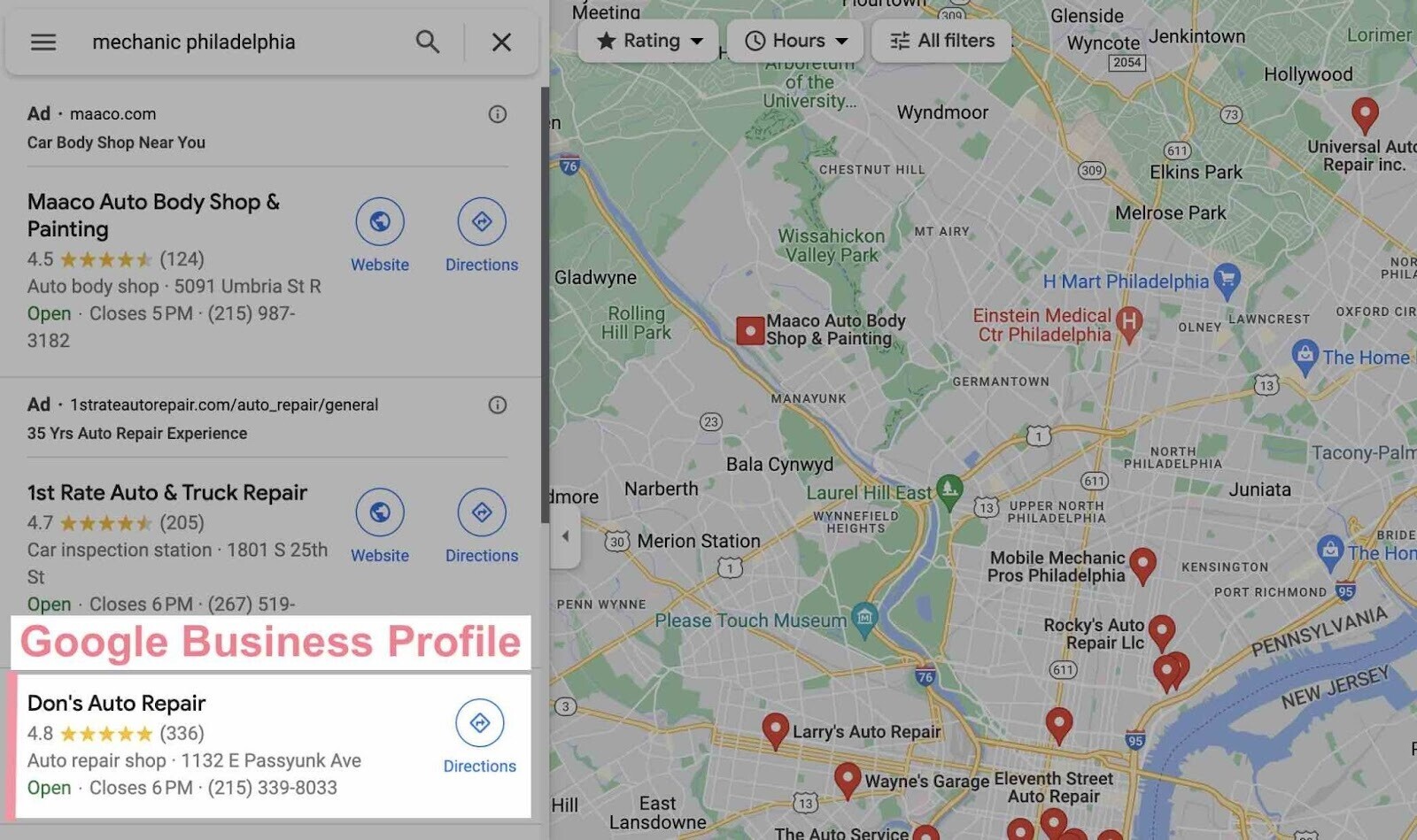
Adding local keywords to your business description can help Google match your GBP to relevant queries. Which can mean more eyes on your business.
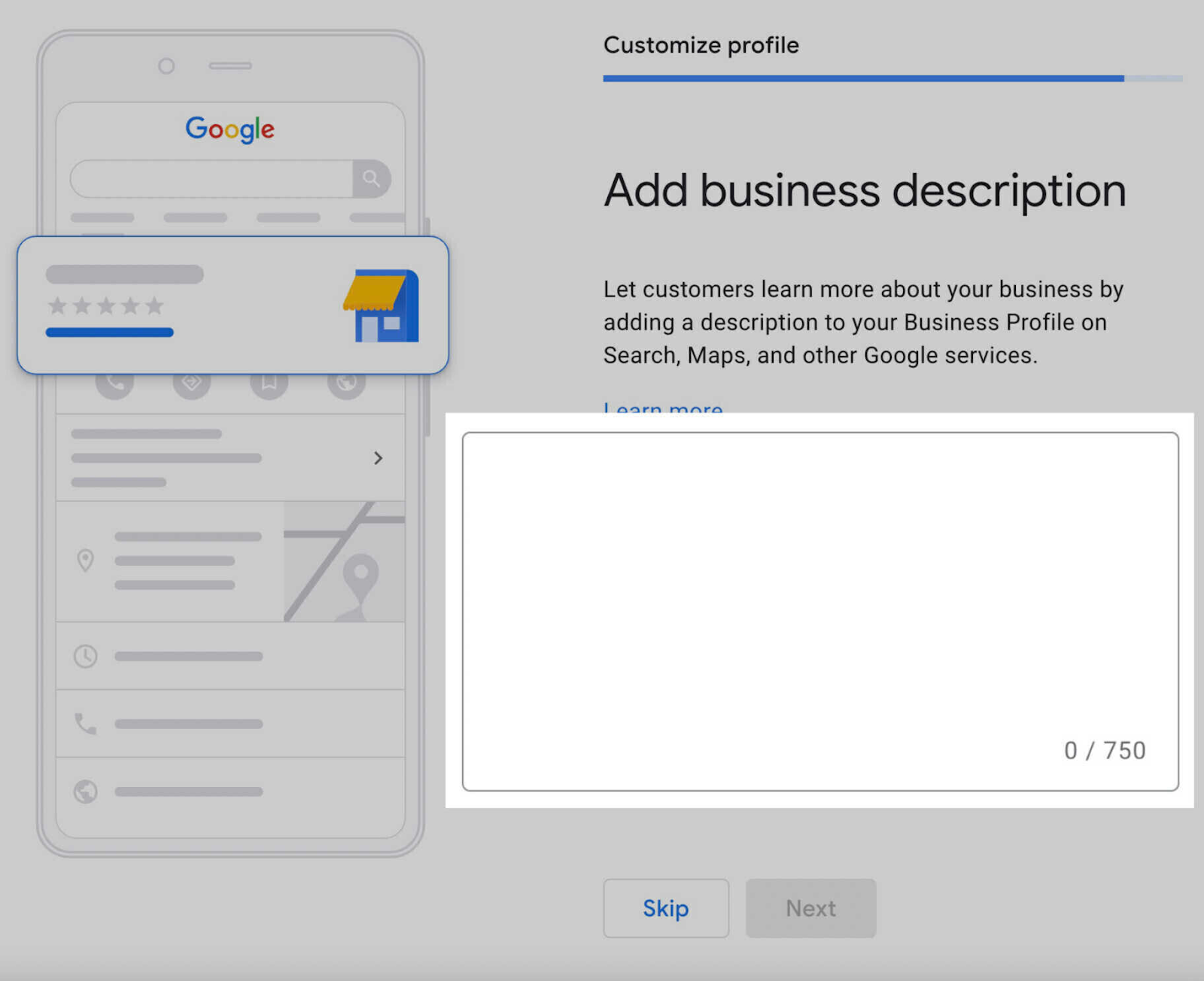
It can also reassure potential customers that you have what they’re looking for.
Here’s an example of what a GBP description looks like:
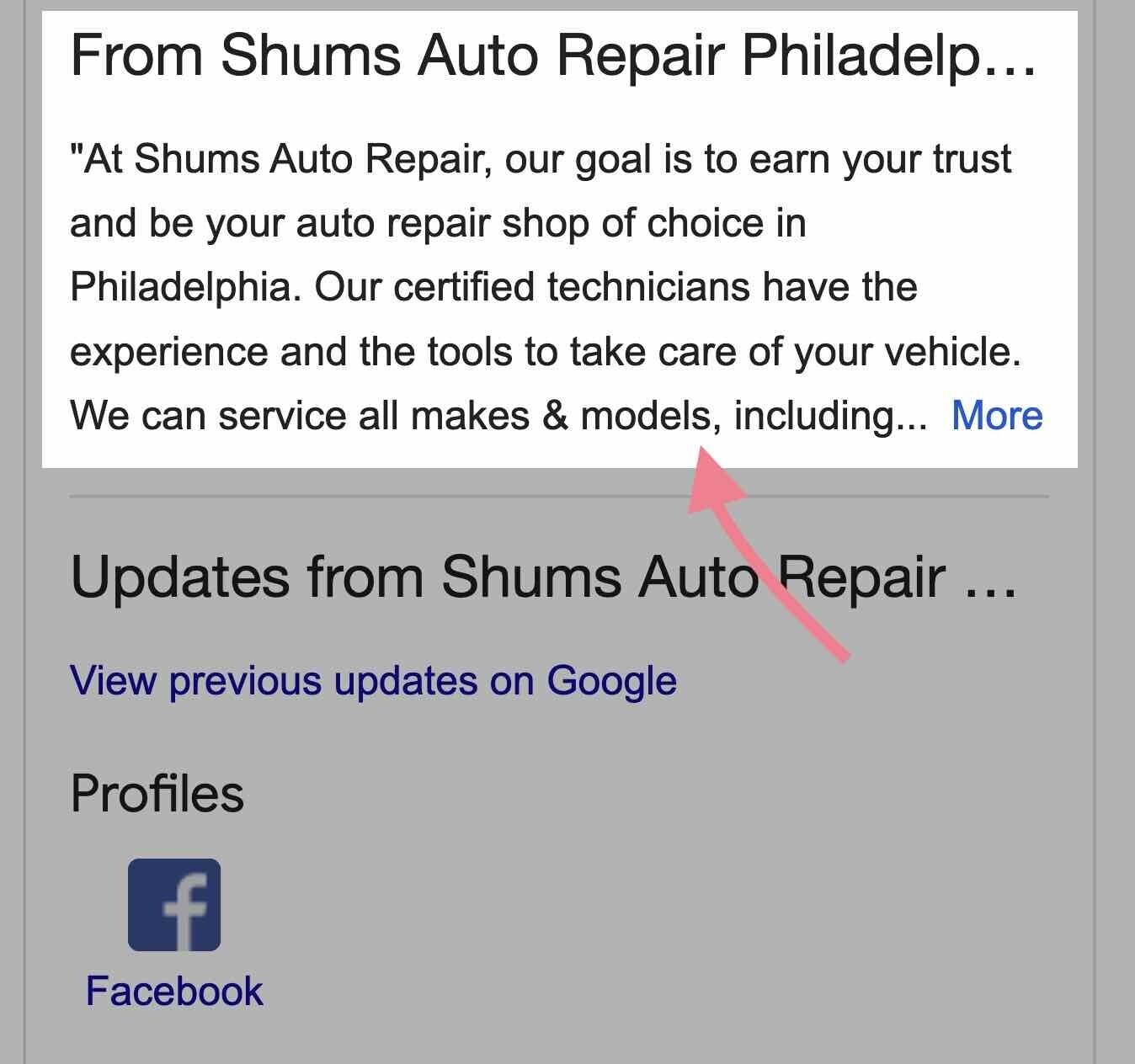
Local keyword research can help you select business categories, too. (Another factor that can affect your local rankings.)
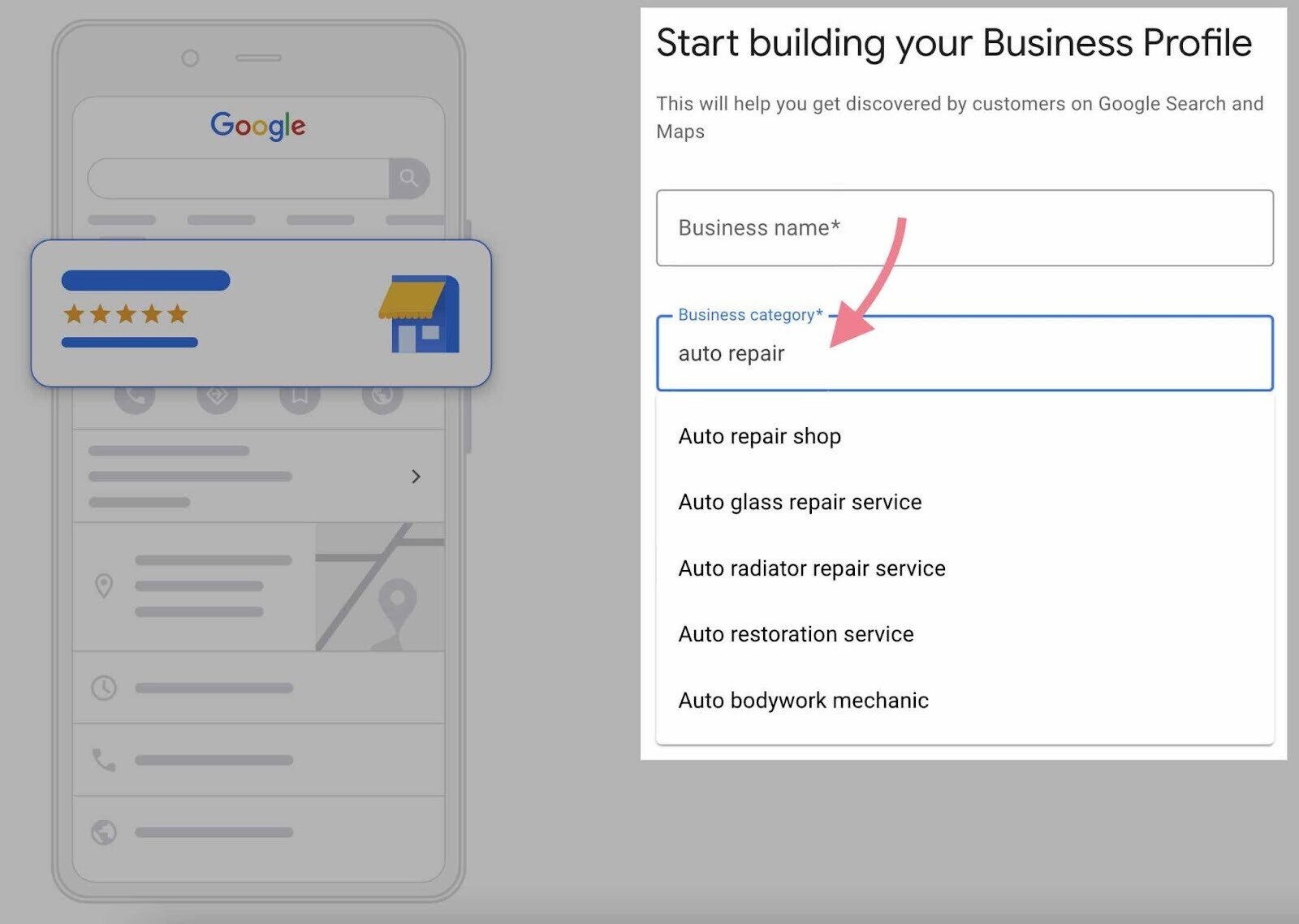
But you should only choose categories that are specific and representative. Adding extras for SEO purposes is against Google’s guidelines.
Note that simply adding keywords to various parts of your GBP isn’t guaranteed to positively impact your rankings. But it can help potential customers understand what your business is about to determine if it’s the right choice for them.
How to Handle Multiple Locations
If you have multiple business locations, do local SEO keyword research for each of them.
People search differently in different locations. And Google displays different results.
So, if you just swap out the location names in your keywords, you could miss out on valuable SEO opportunities.
Once you have location-specific keywords, map them to individual location pages (pages that are optimized for each location). That way, you can target your keywords more explicitly.
For example, let’s look at Fat Hippo, a burger restaurant chain in the U.K.
Its Newcastle location page (“fathippo.co.uk/locations/newcastle”) targets keywords like “best burgers in newcastle.” As the SERP shows:
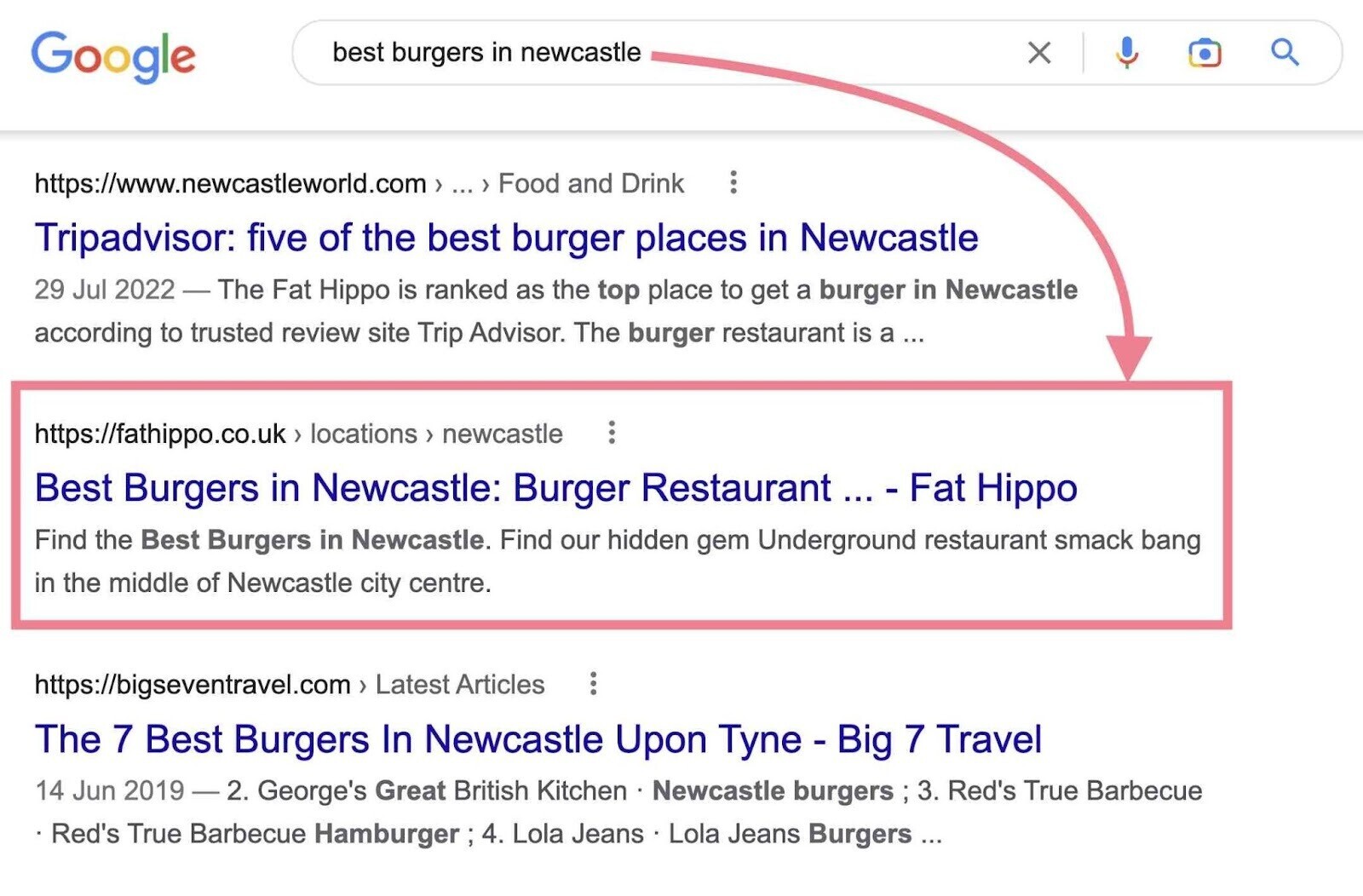
While its Cardiff location page (“fathippo.co.uk/locations/cardiff”) targets keywords like “best burgers in cardiff.”

These location pages also provide highly relevant information to searchers in each area. Which can help the restaurant score more customers.
For example, they each contain a photo of the specific location. Along with a list of amenities at that specific restaurant.
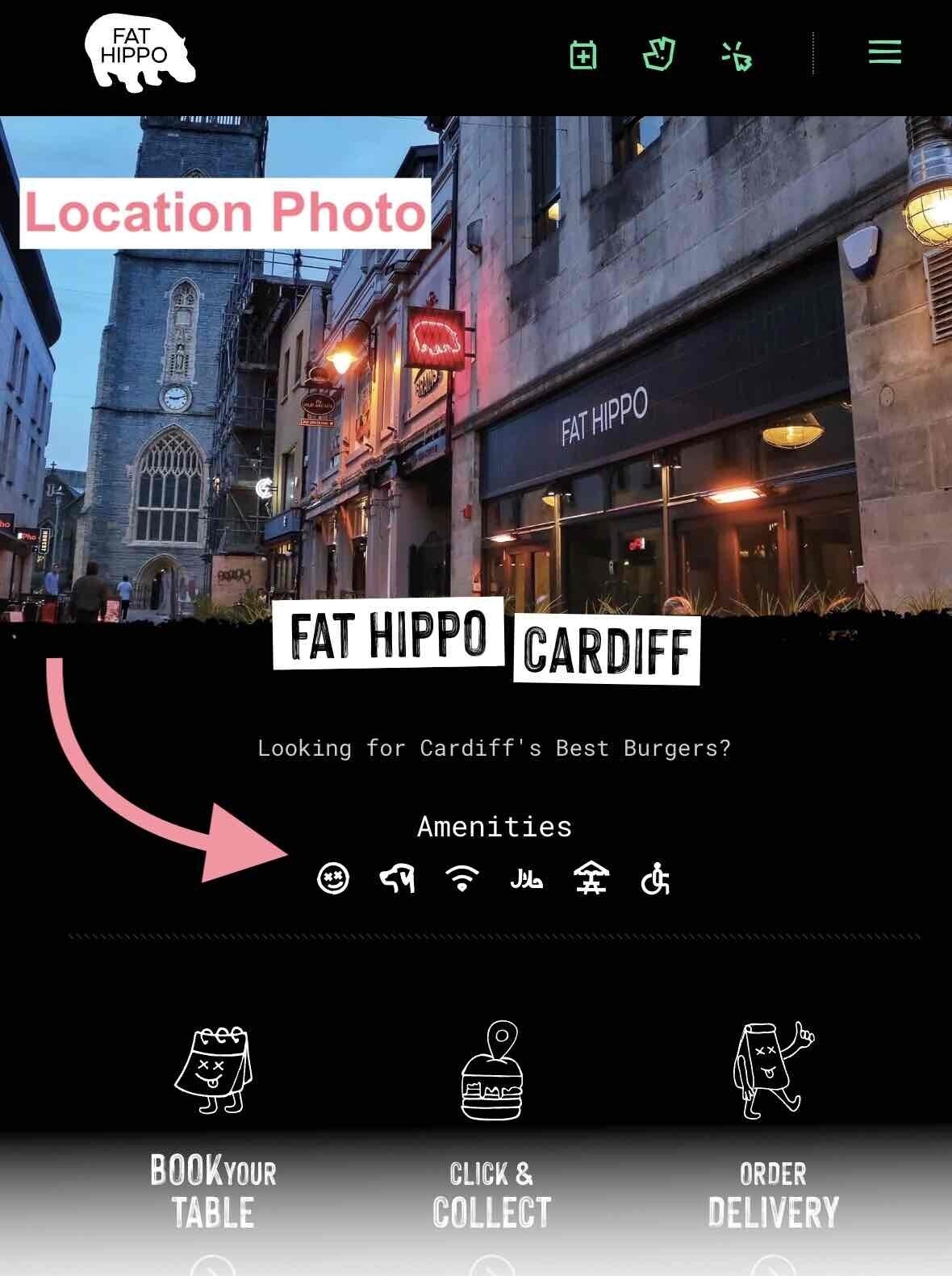
There are also location-specific contact details and opening hours.
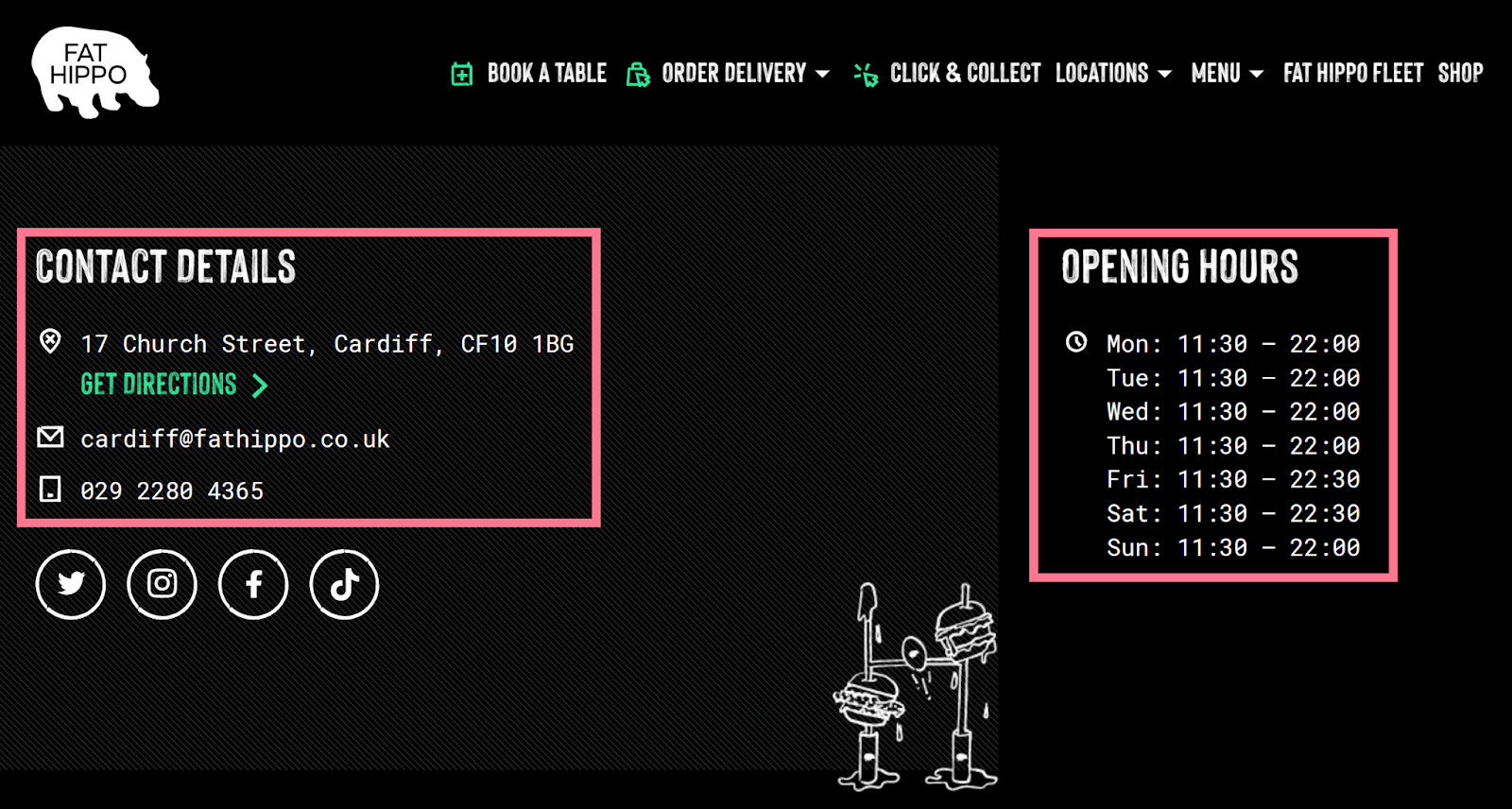
Fat Hippo has a Google Business Profile for each location, too. This can help their rankings in the local pack and Google Maps. And ensure users get the most relevant information.
How to Track Your Local Keyword Rankings
Tracking your local keyword rankings shows whether your local SEO efforts are paying off.
In other words, are you ranking for new keywords? Are your current keywords improving?
It’s also a good idea to watch out for any ranking drops so you can take action straight away.
Here’s how to keep tabs on your local rankings in Google Search and Maps:
Track Your Google Search Rankings
You can track your Google Search rankings with Semrush’s Position Tracking tool.
It shows where you appear in the organic results. And whether you appear in the local pack (as well as other SERP features).
To get started, enter your domain and click “Set up tracking.”
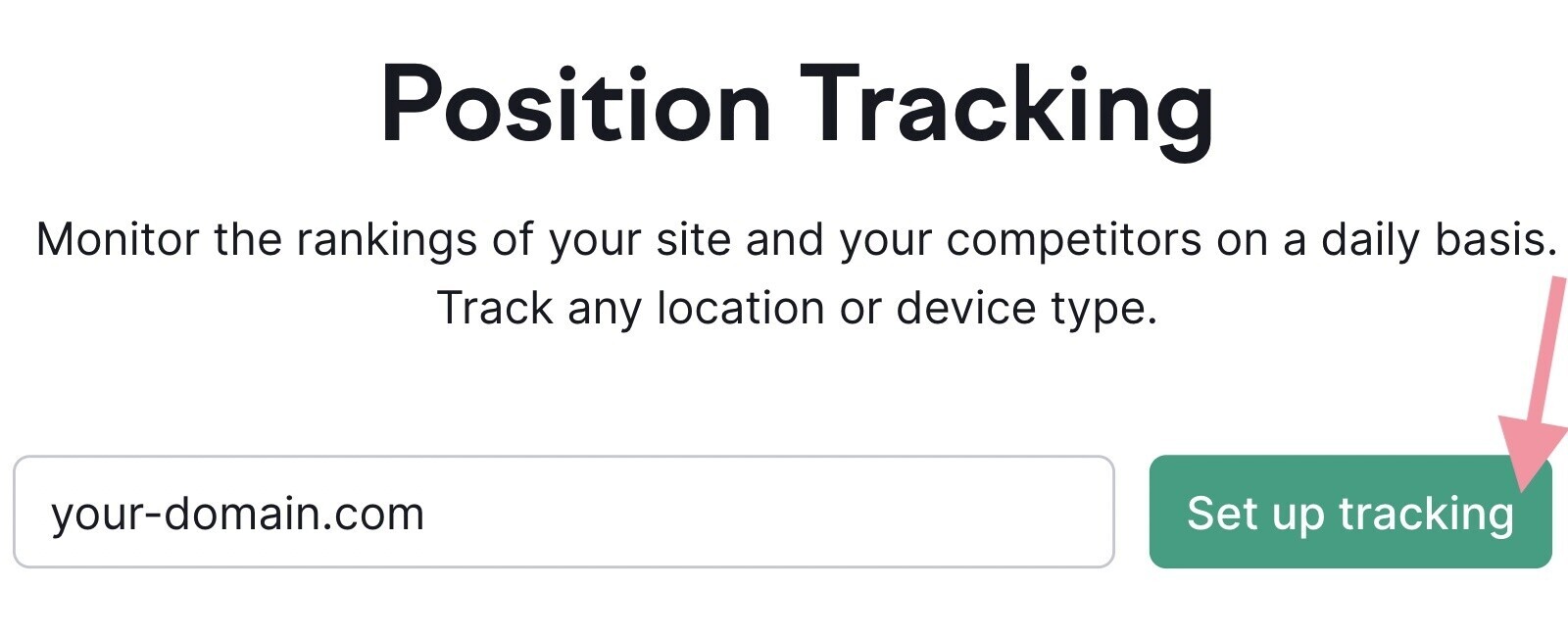
If you have multiple locations, set up tracking for each location URL:
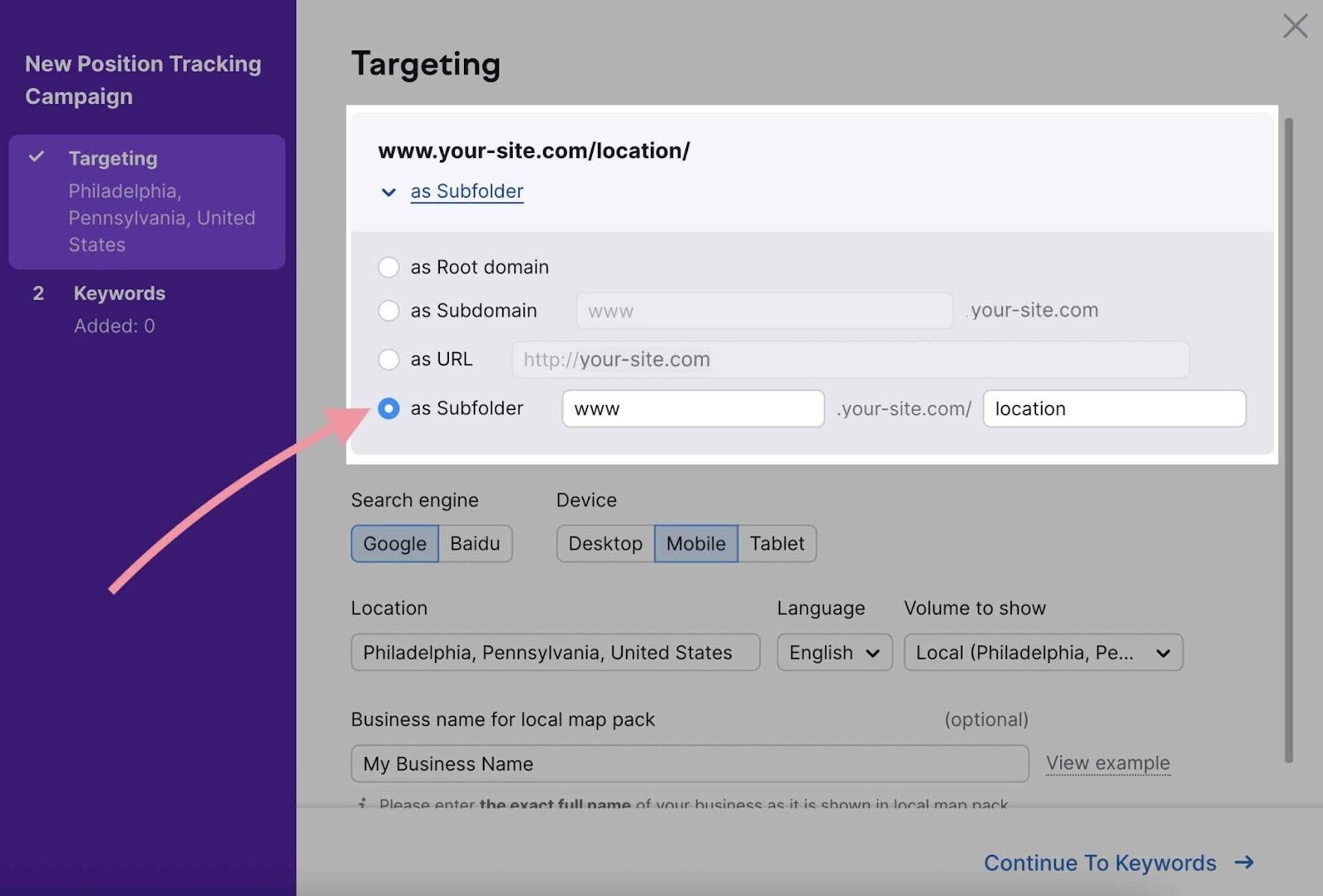
Otherwise, go ahead and complete the page. And know that it’s a good idea to:
- Set the “Device” to “Mobile” to track mobile rankings
- Set the “Location” to track rankings by searcher location
- Enter your business name (exactly as it appears in the local pack) to track local pack rankings
Then, click “Continue To Keywords.”
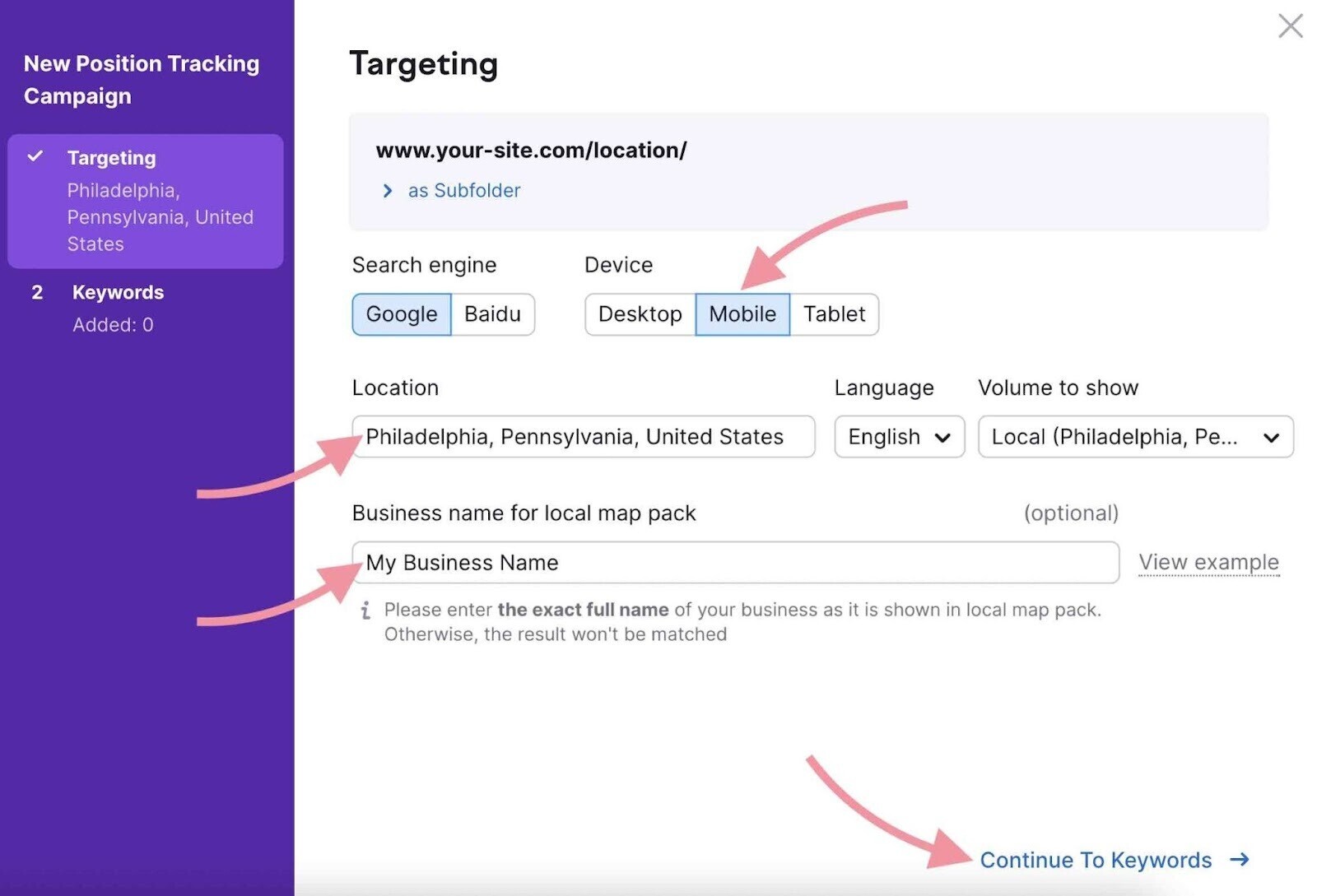
Add the keywords from your mapping spreadsheet. Or, go back to Keyword Strategy Builder and use the “Send to” button to send all your keywords directly to Position Tracking.
Once the tool is ready, go to the “Overview” tab and scroll down to the “Rankings Overview” table. This displays your current and previous ranking for each keyword (based on the time range you select).
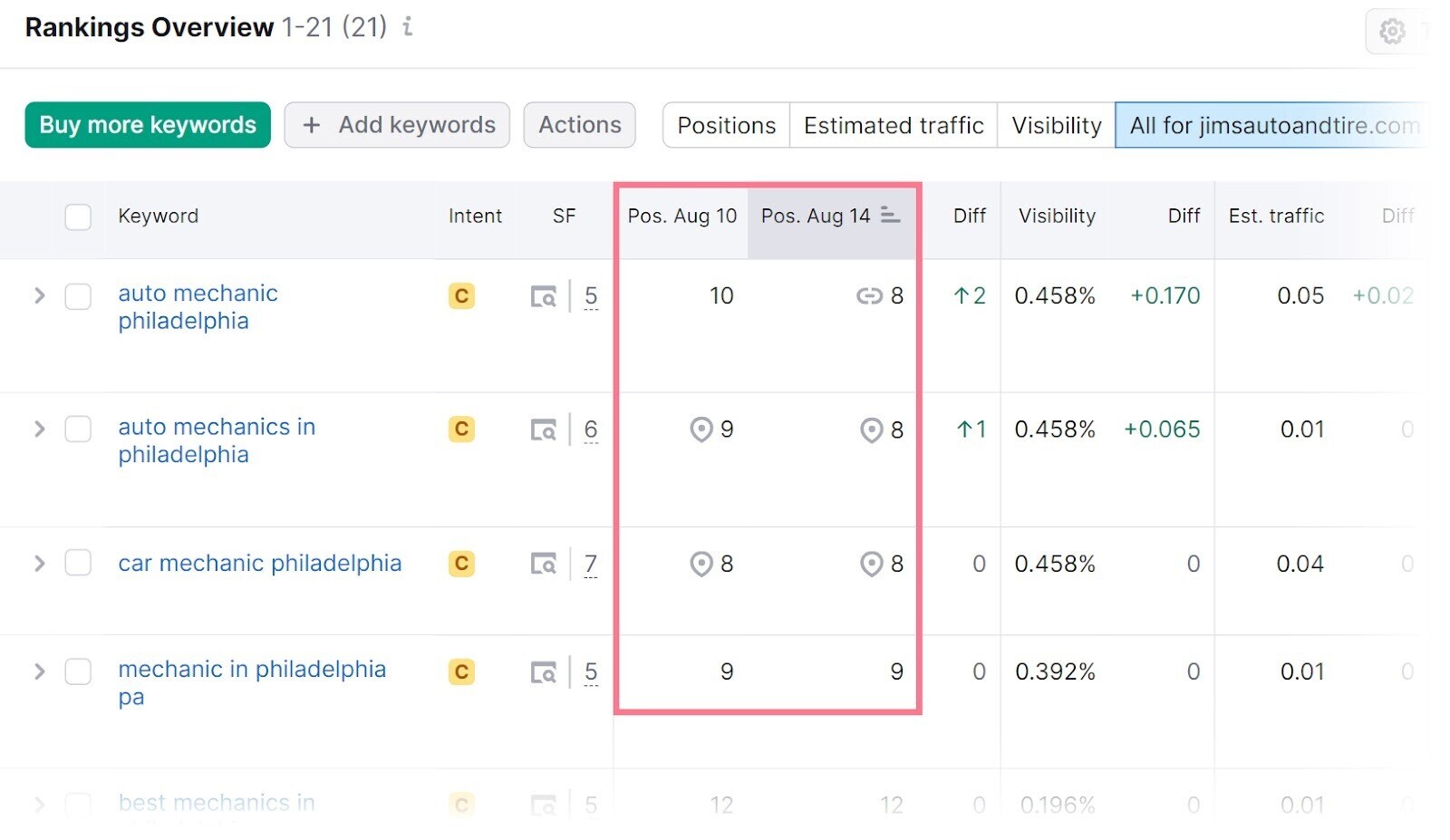
The “SERP Features” column shows whether the keyword triggers a local pack. And if so, whether your business appears in it.
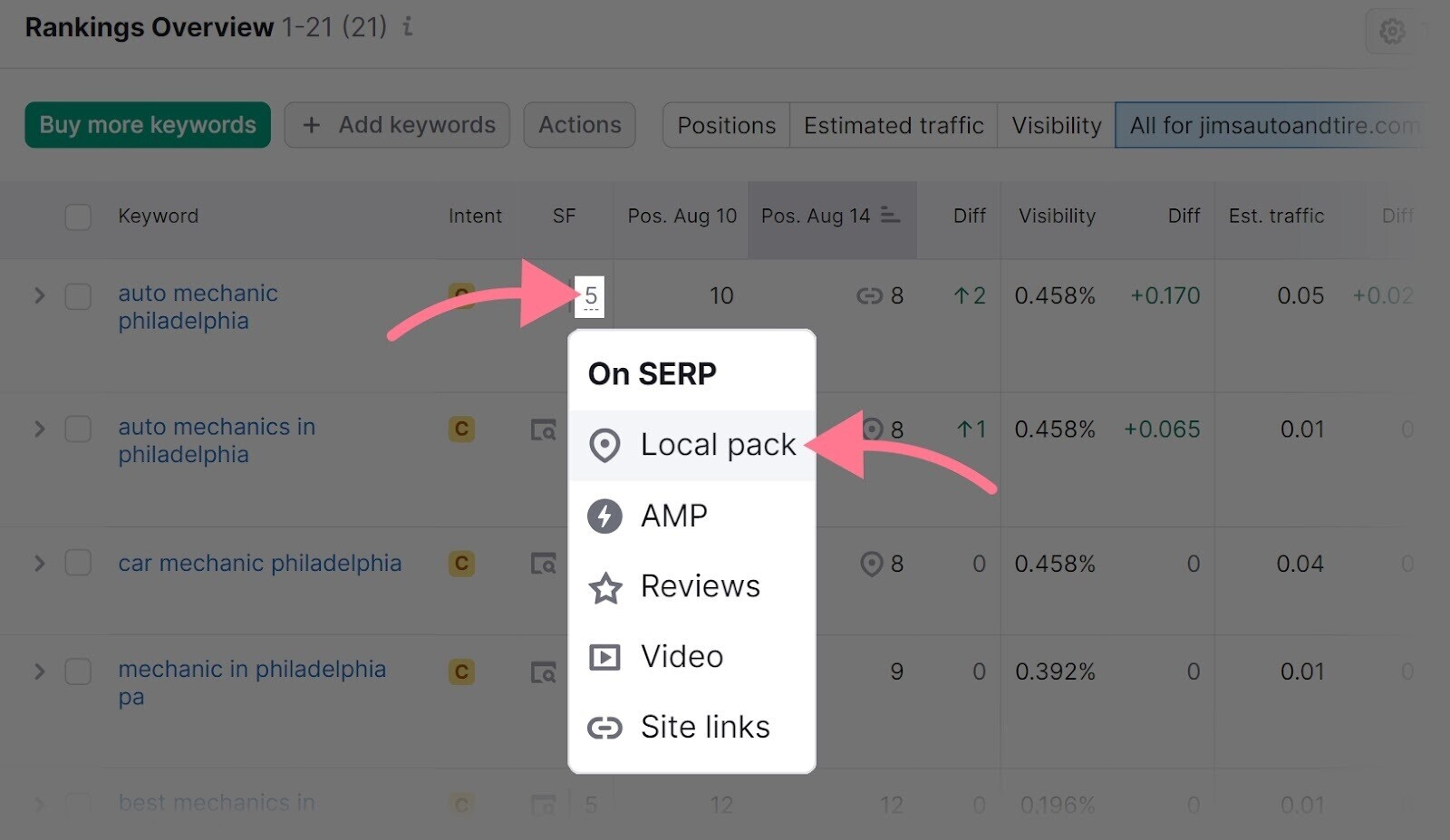
Triggers alert you about important movements. Like when a keyword you rank for enters or leaves the top three search results.
To set up your own, click the gear icon and select “Triggers.”
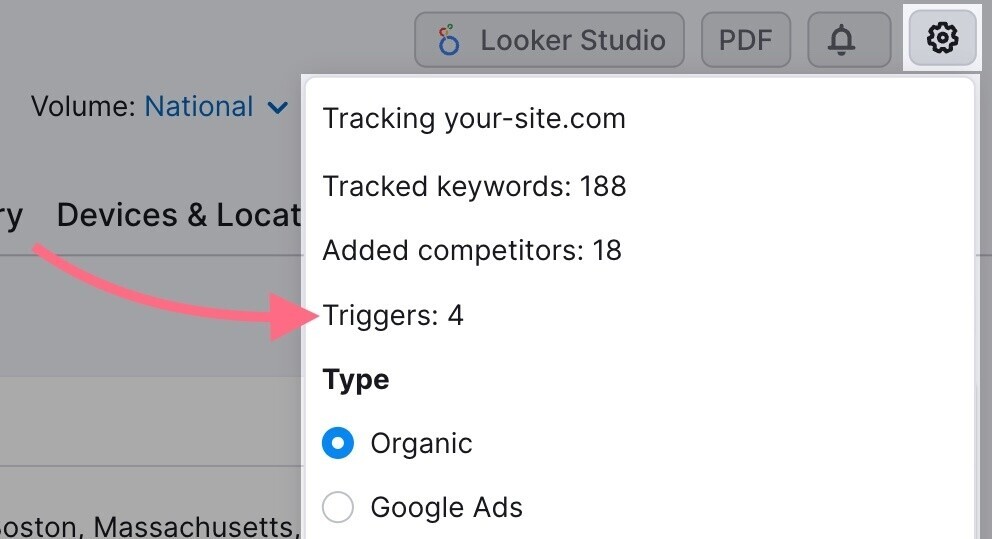
Then click “Add new trigger.” You can set triggers for when any of your rankings changes by a certain amount, enters or leaves a specific position, etc.
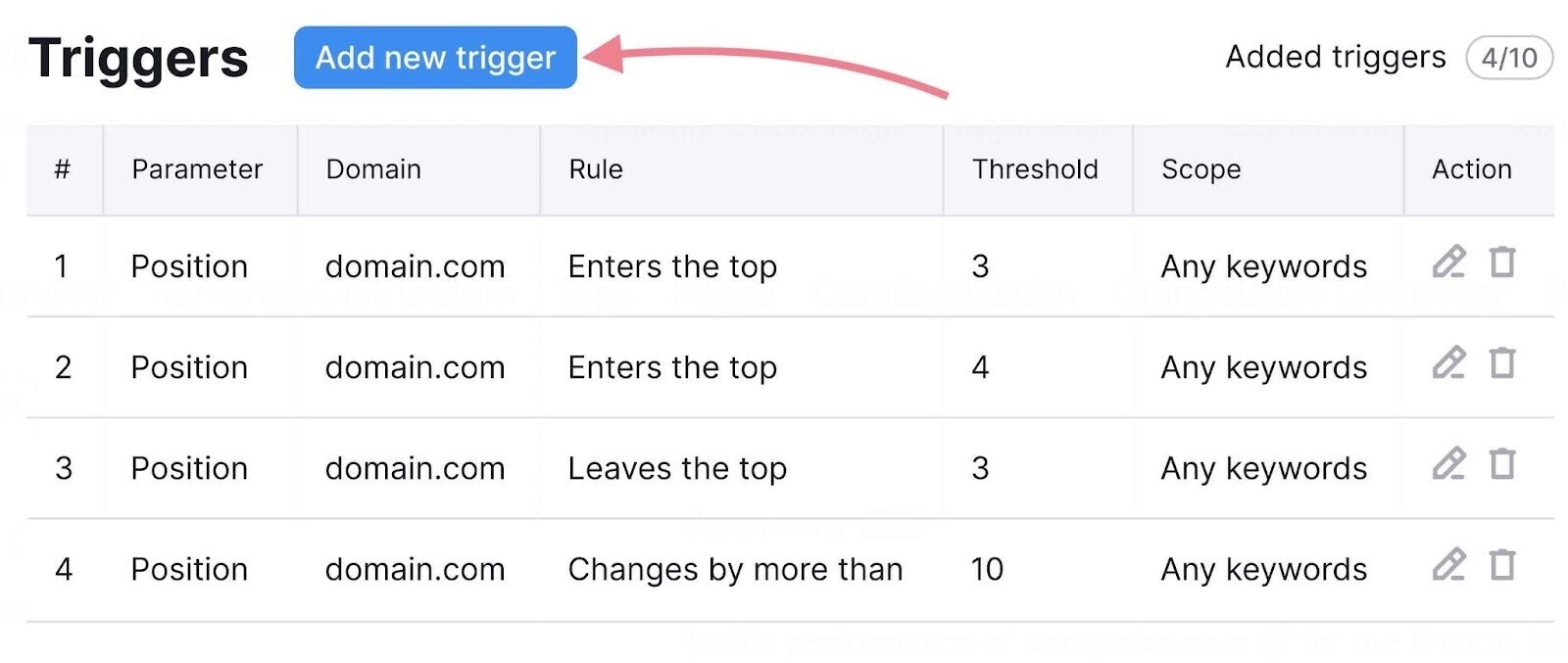
Track Your Google Maps Rankings
Track your Google Maps rankings with Semrush’s Map Rank Tracker. This tool is built specifically to let you see where you rank in different areas of your target location.
To get started, enter your business name and choose the correct one from the list.
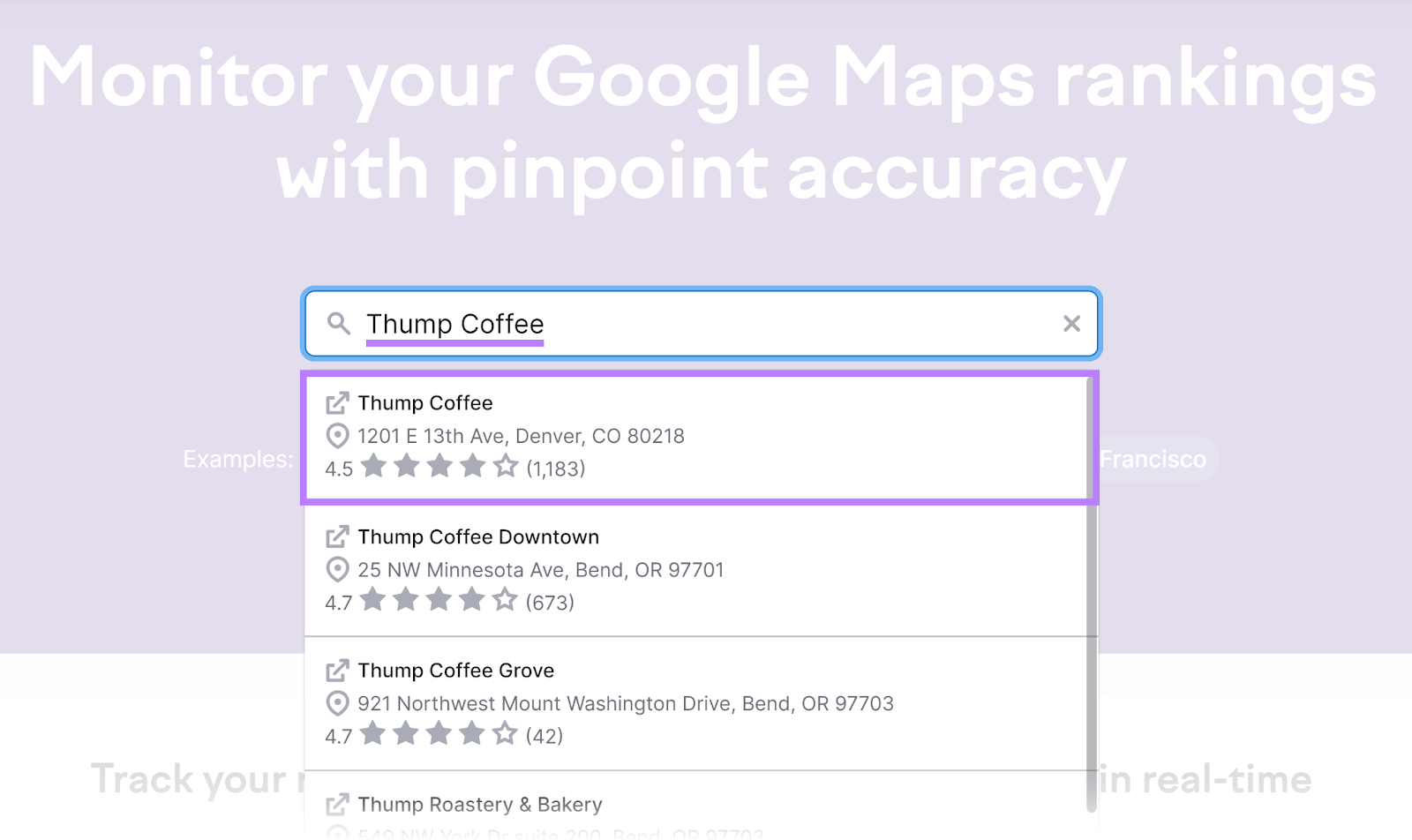
Add the keywords you want to track (from the list you created earlier).
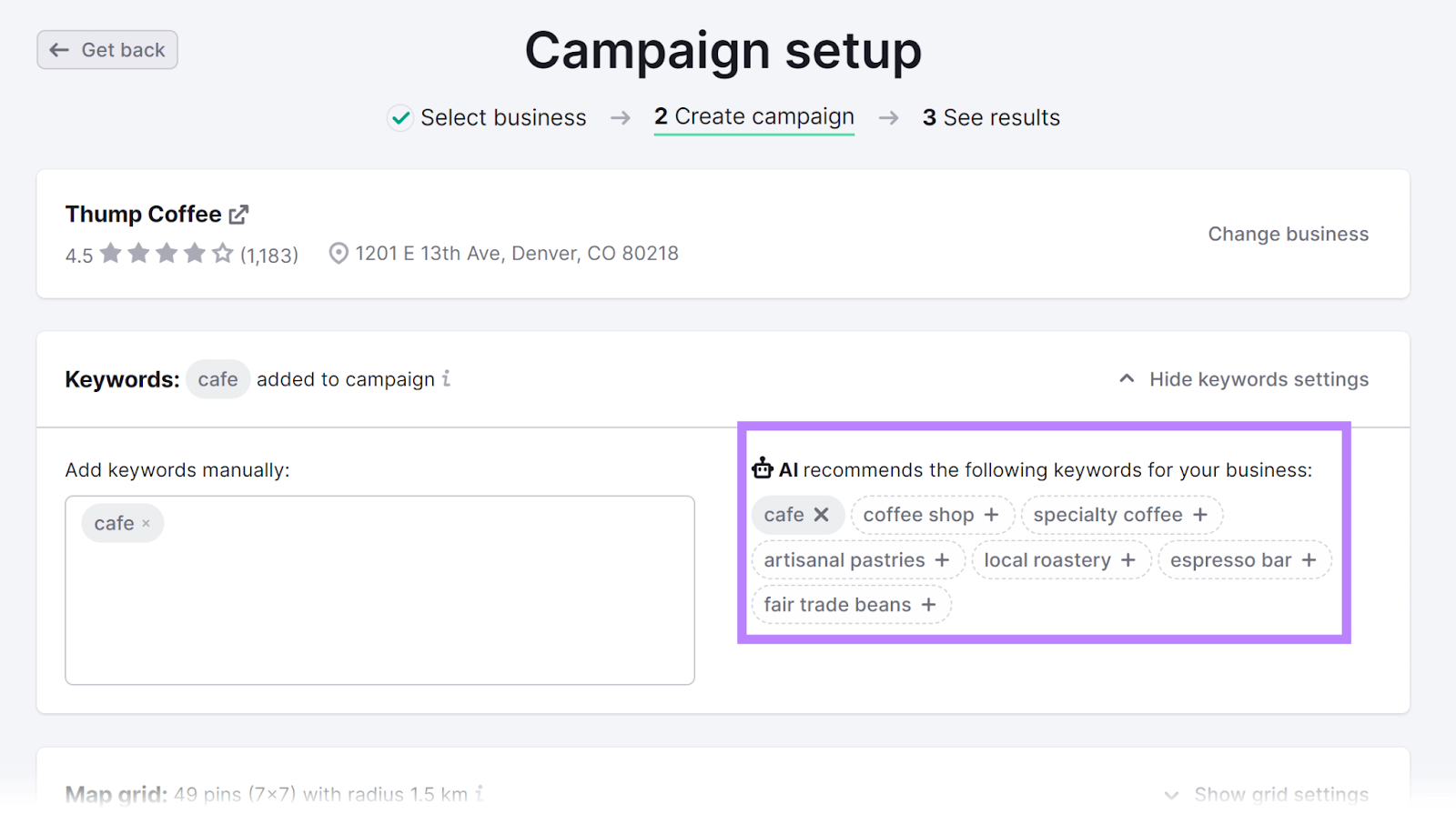
Choose your map grid size (the number of pins depends on the size).
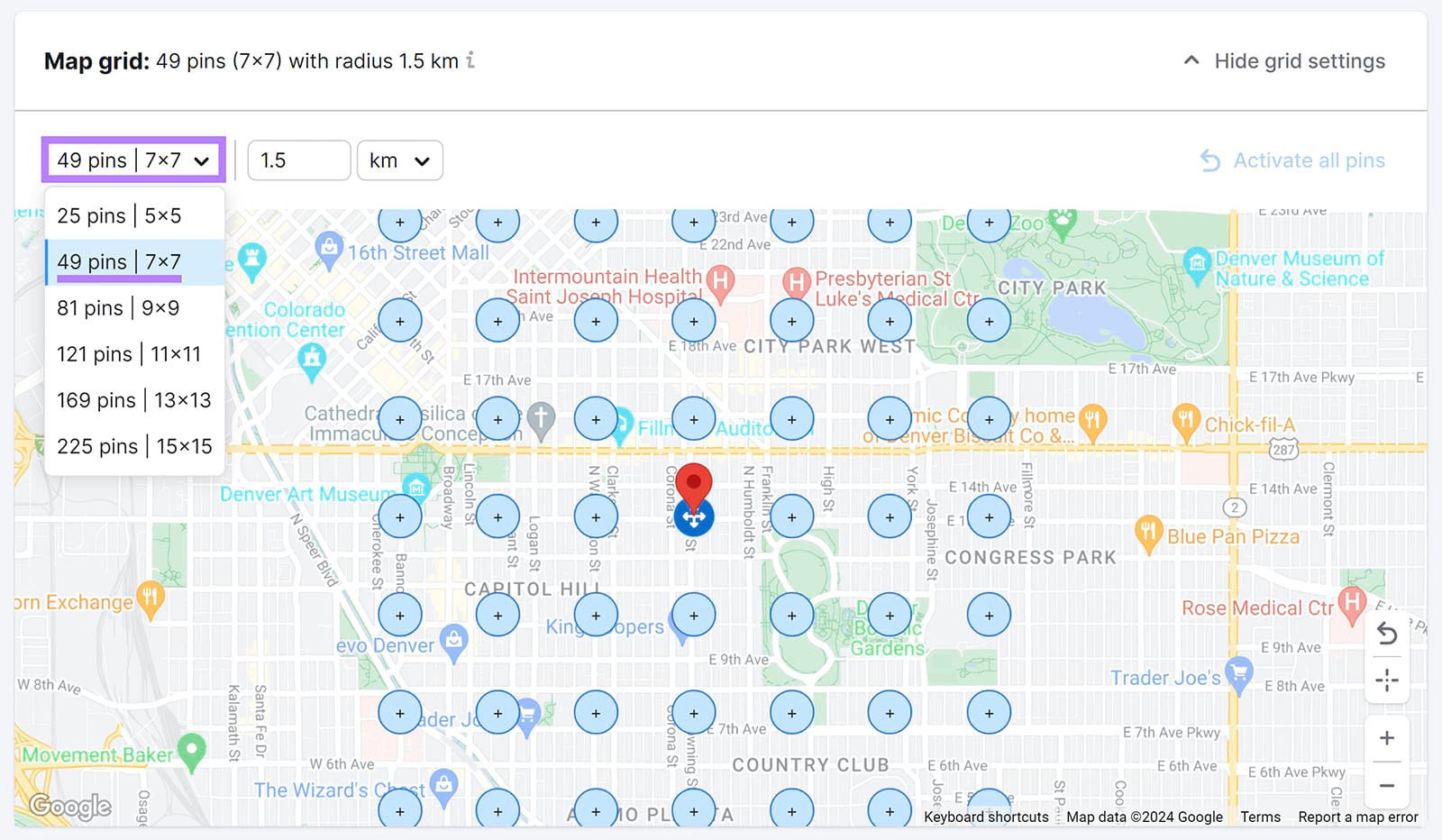
Finally, choose how often you want the data to be updated. Then, click “Create campaign.”

You’ll then see a heatmap of your business’s local rankings at each pin around your target location. Along with which competitors are ranking alongside you.
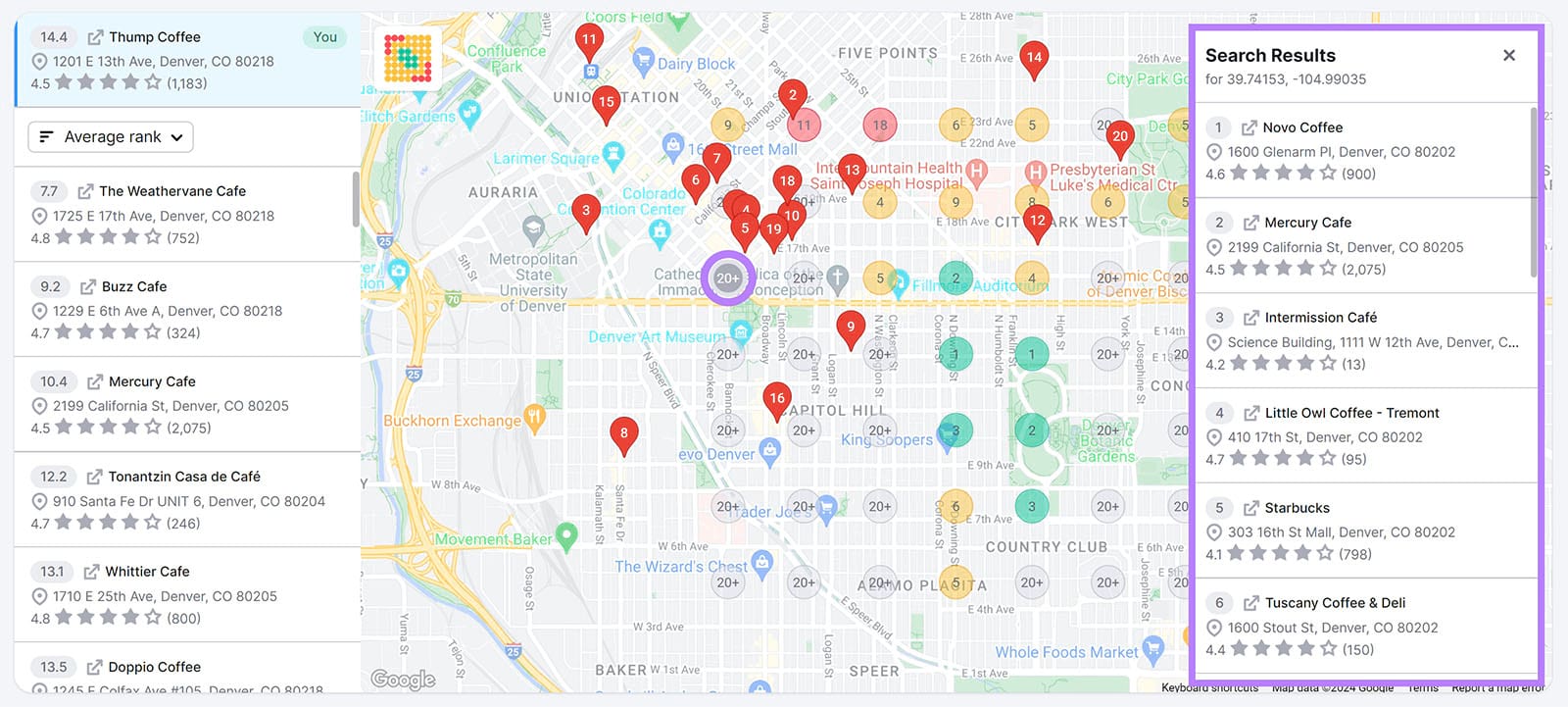
Improve Your Local Visibility
Local keyword research is the foundation of an effective local SEO strategy.
It enables you to find and target terms that can attract nearby audiences. To drive more web traffic, foot traffic, and sales.
Use the Keyword Magic Tool to find valuable terms that are right for your local business.



![Email Signature Examples: How to Write a Great One [+ Free Generator]](https://bloggerseo.com.ng/wp-content/uploads/2024/12/email-signature-examples-how-to-write-a-great-one-free-generator-150x60.png)
